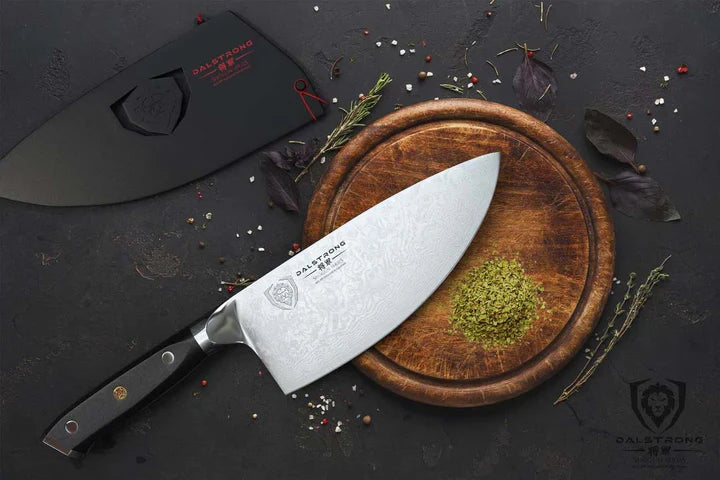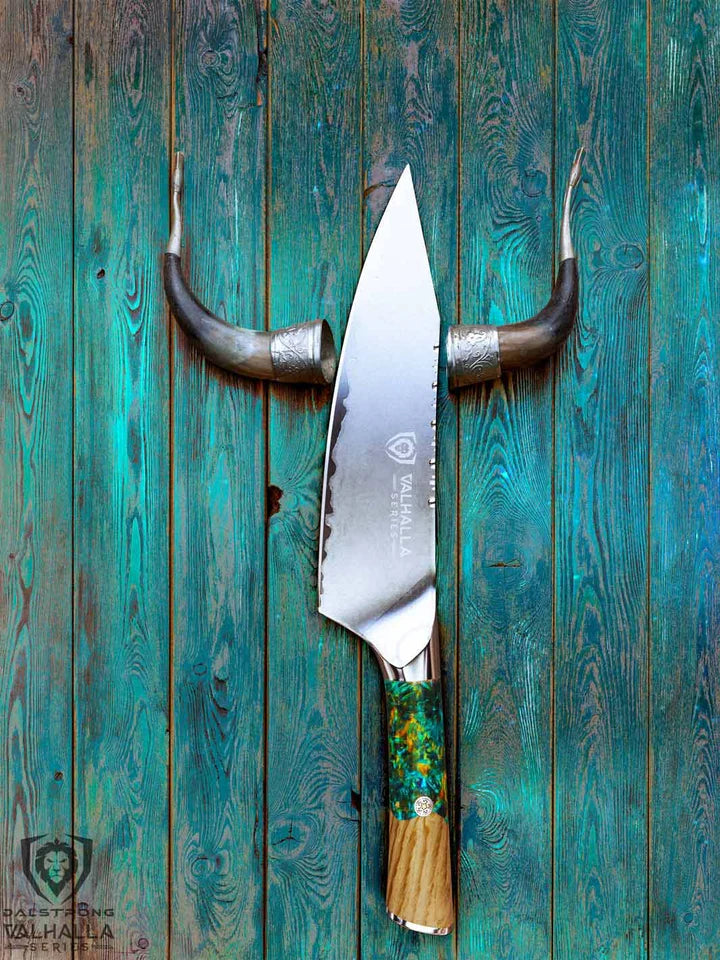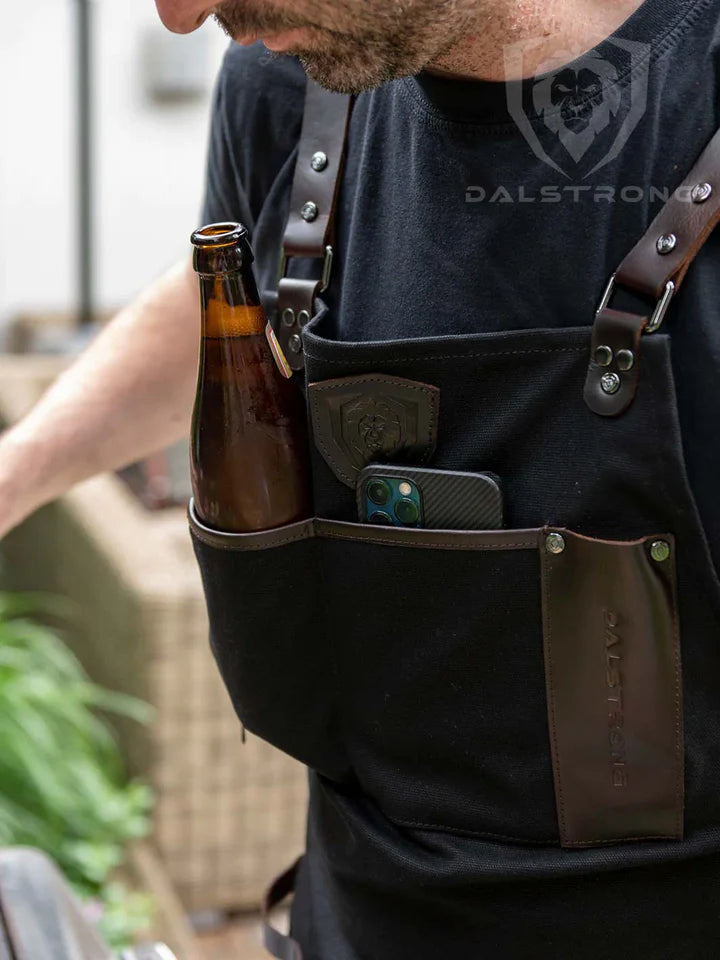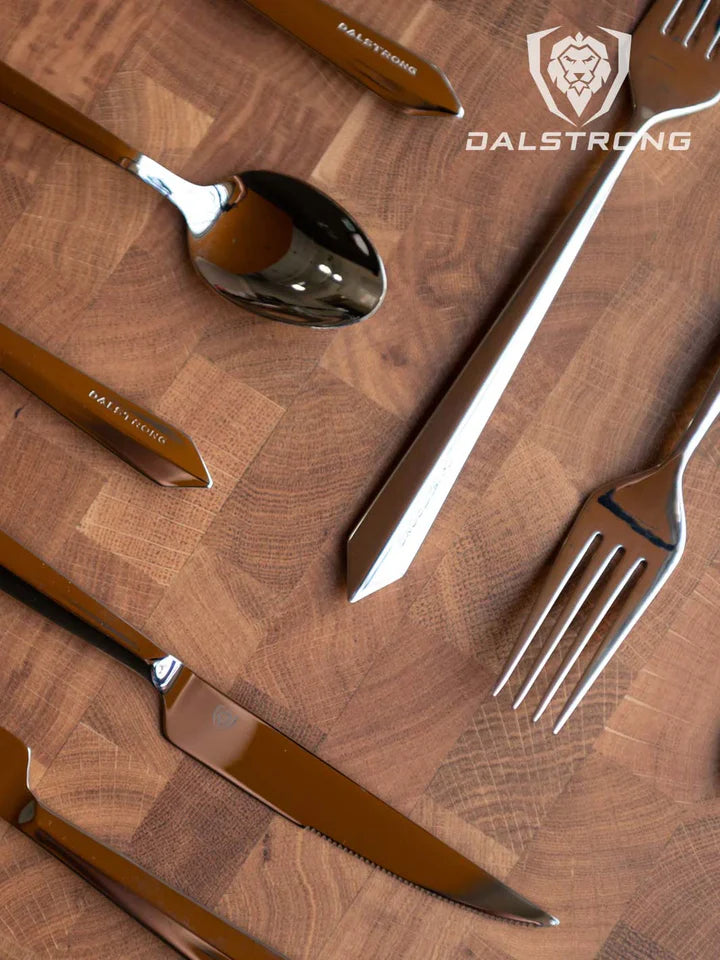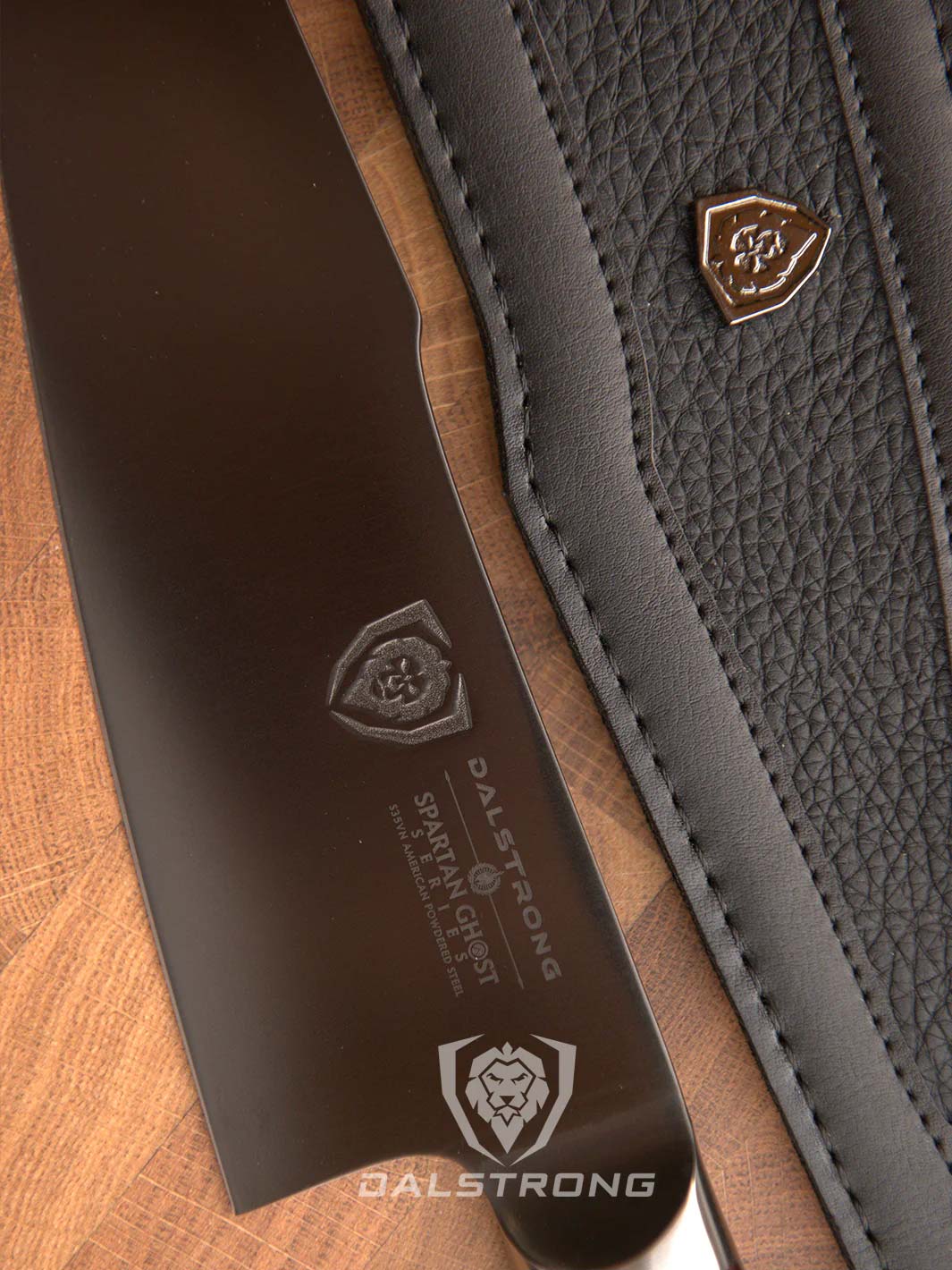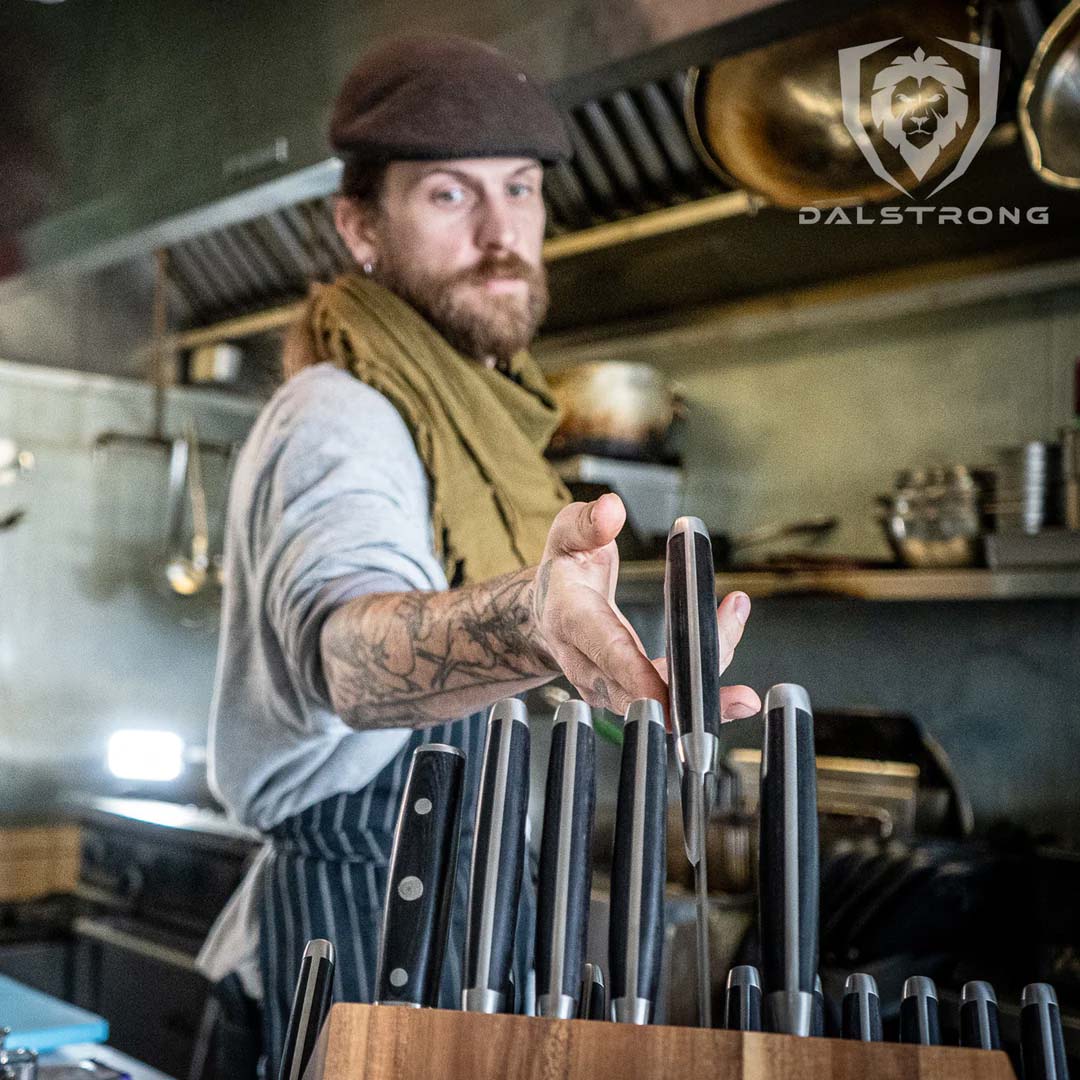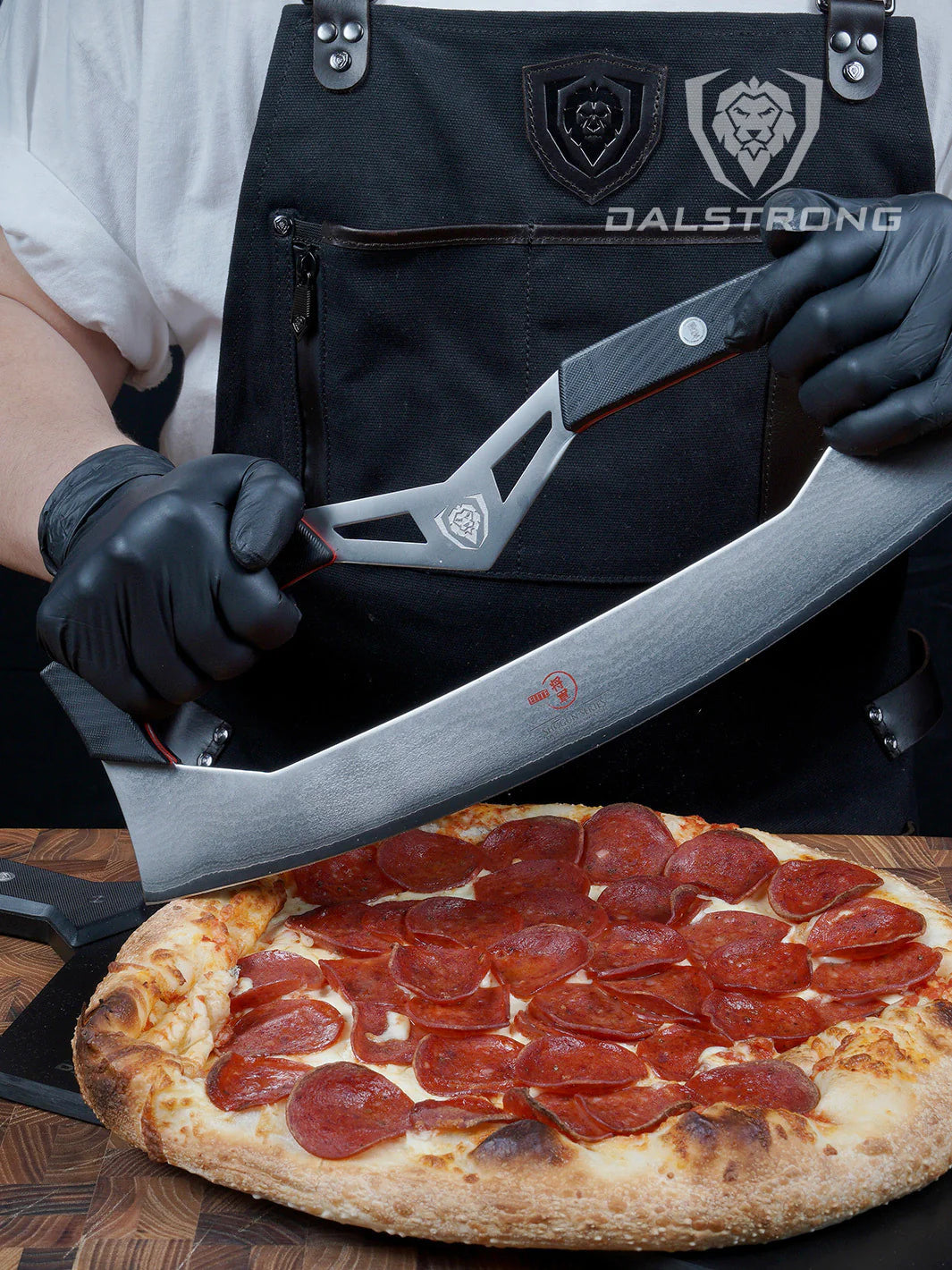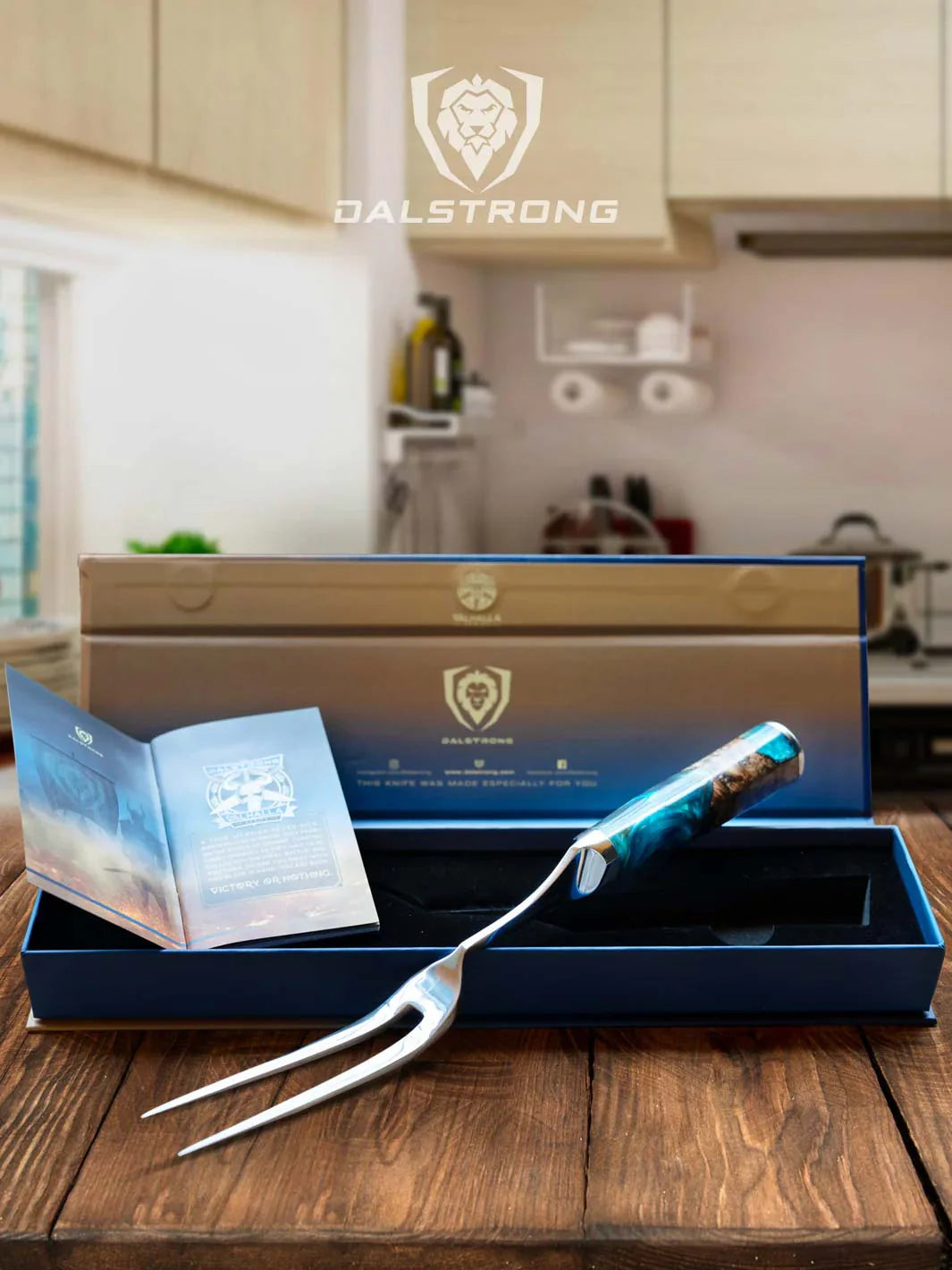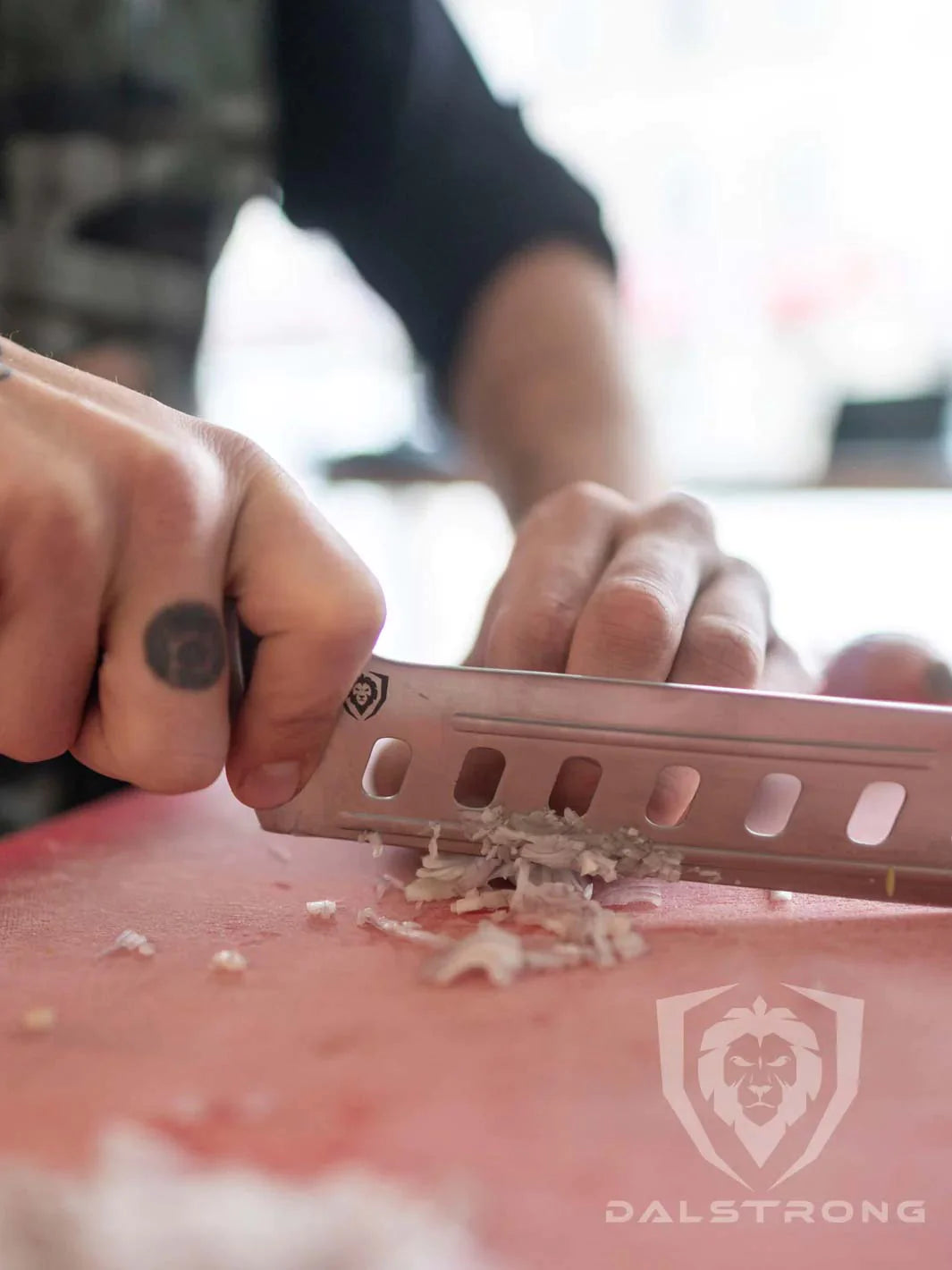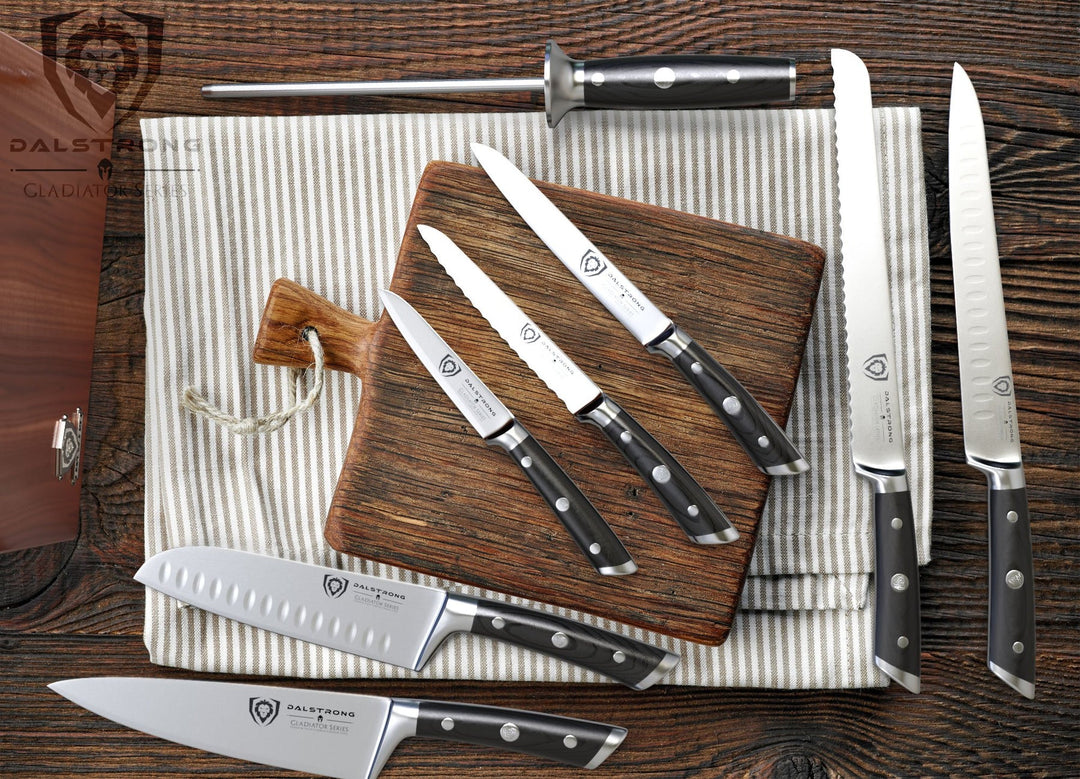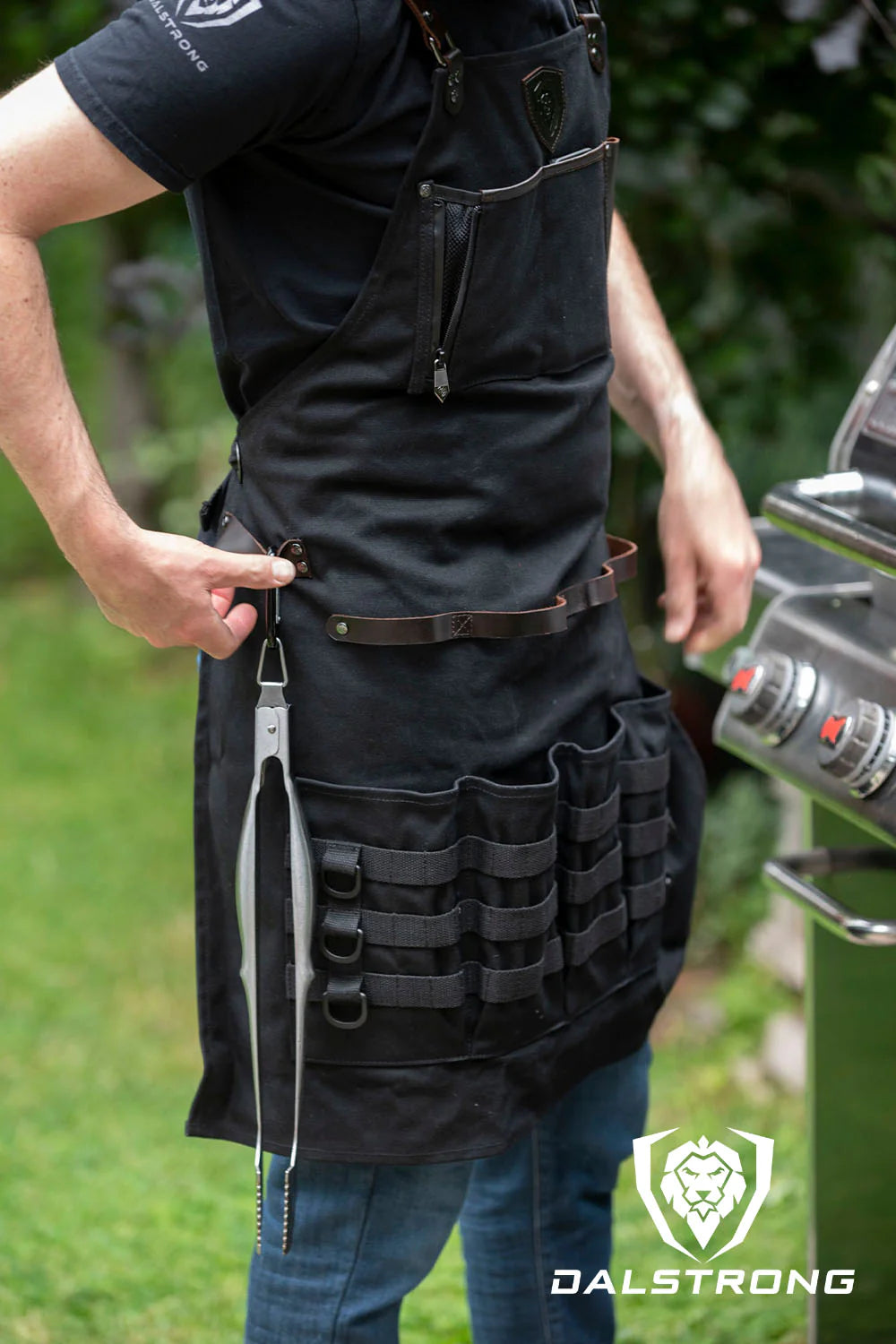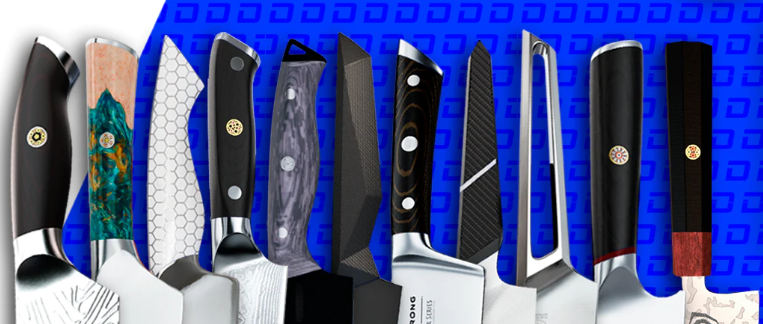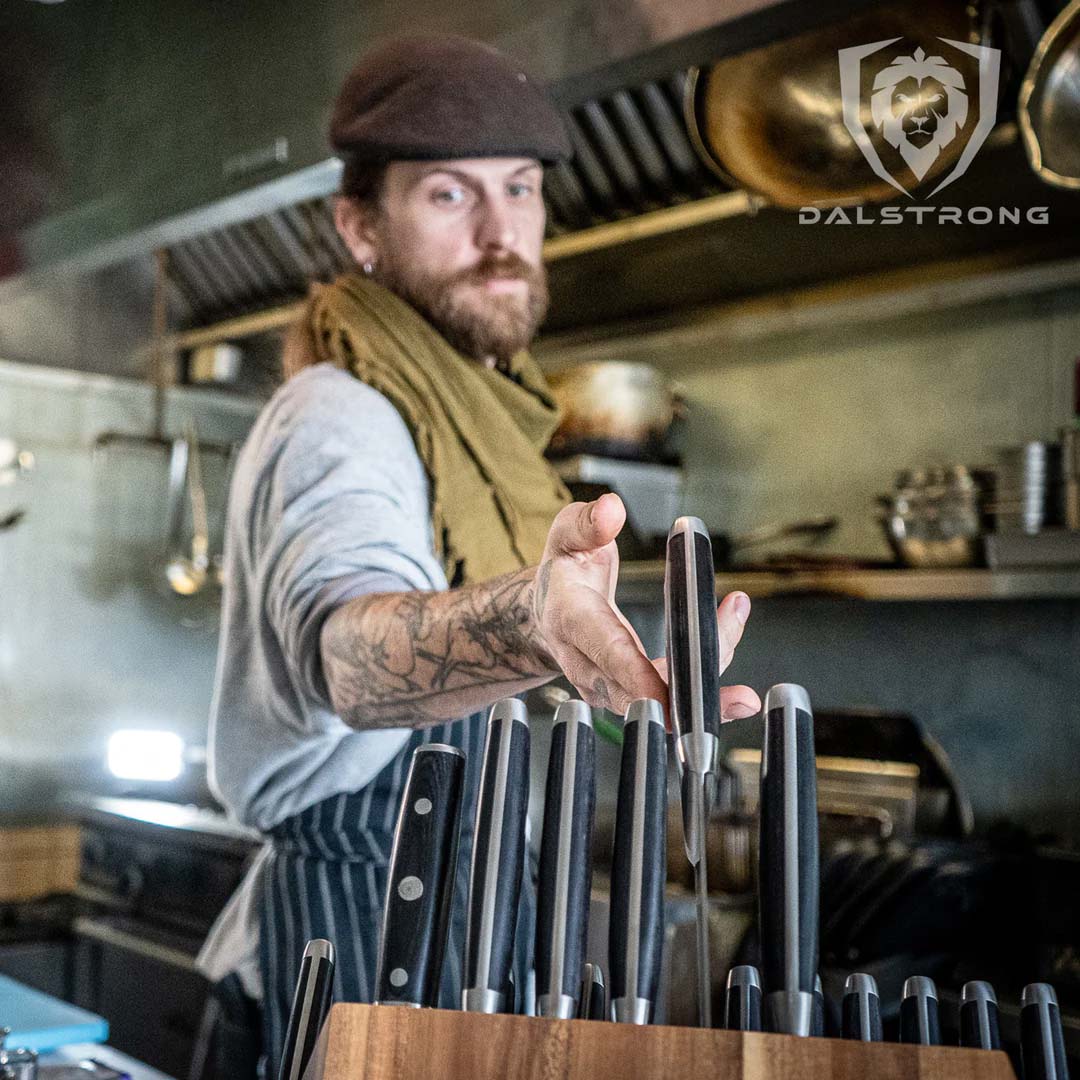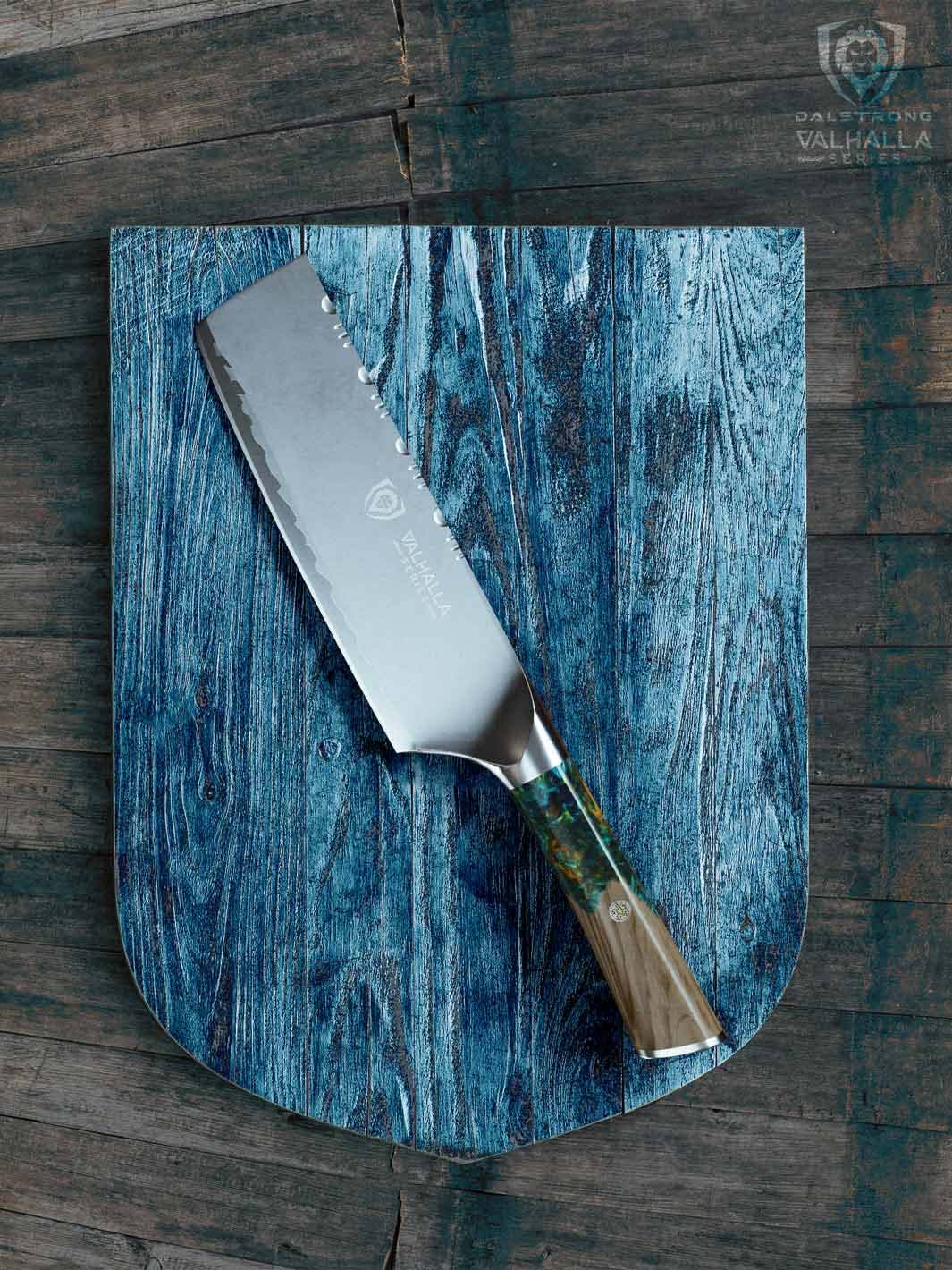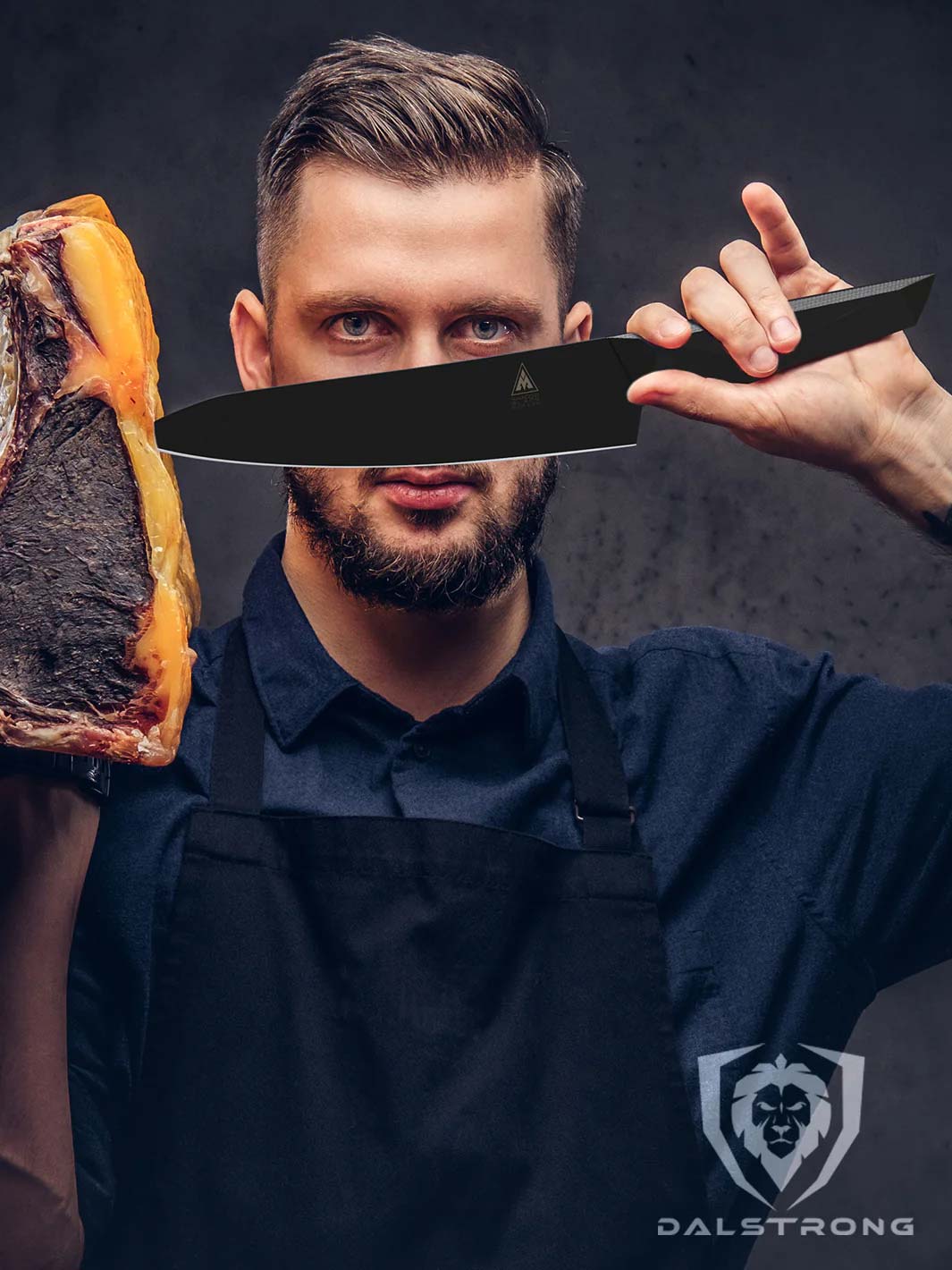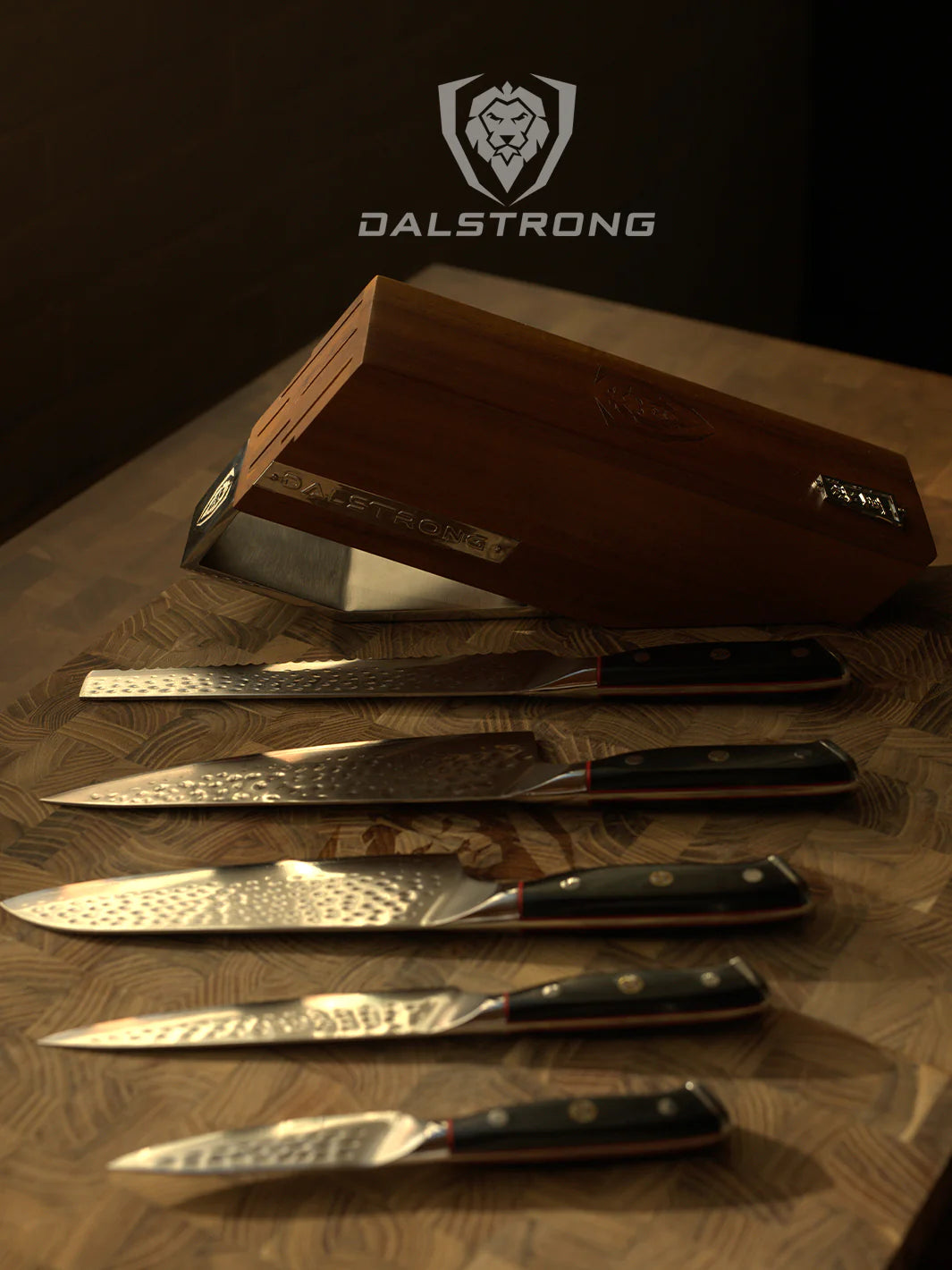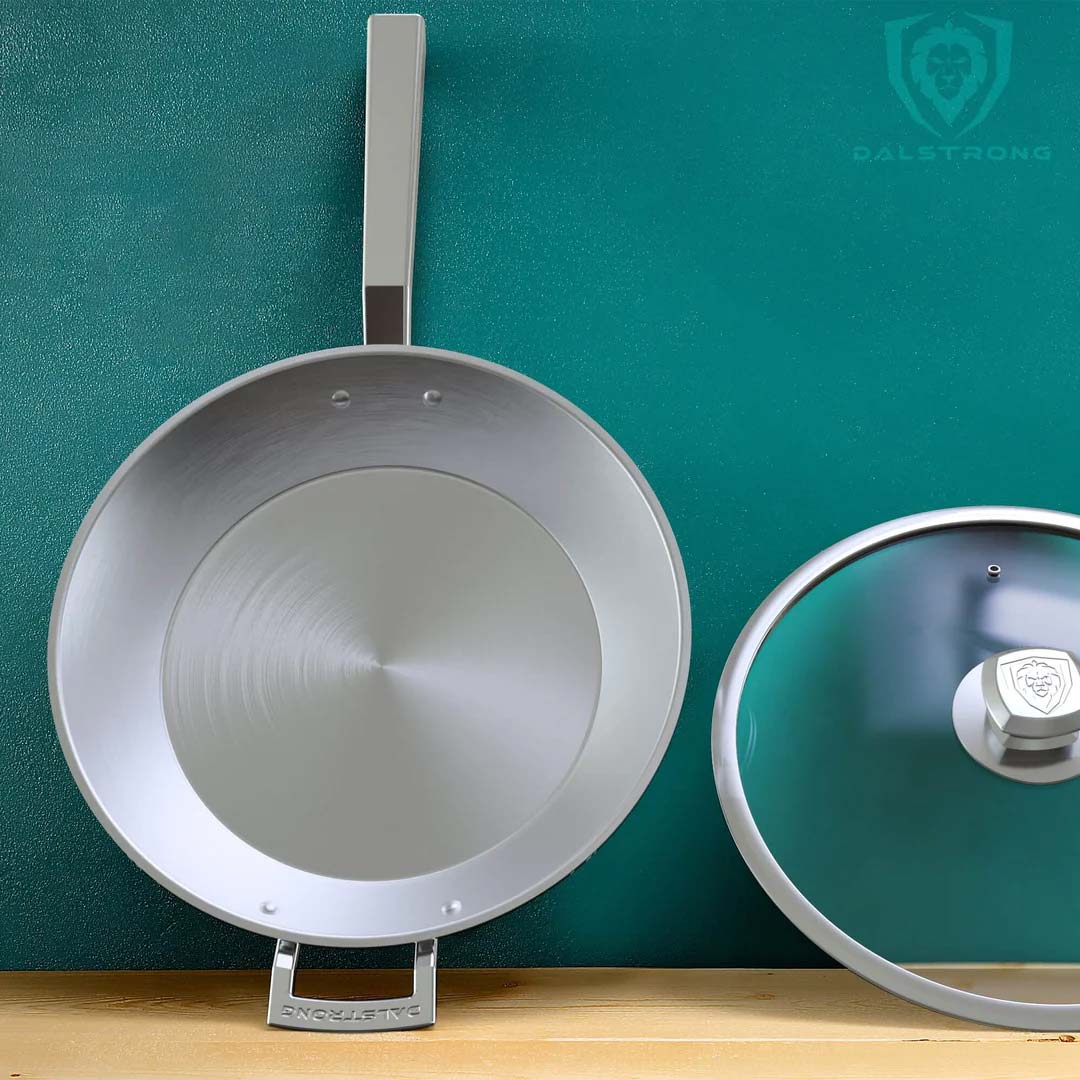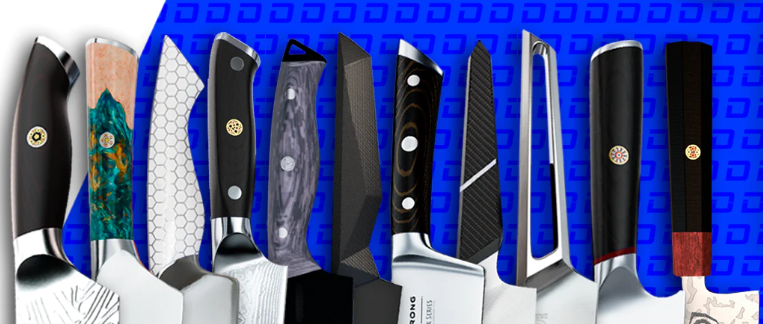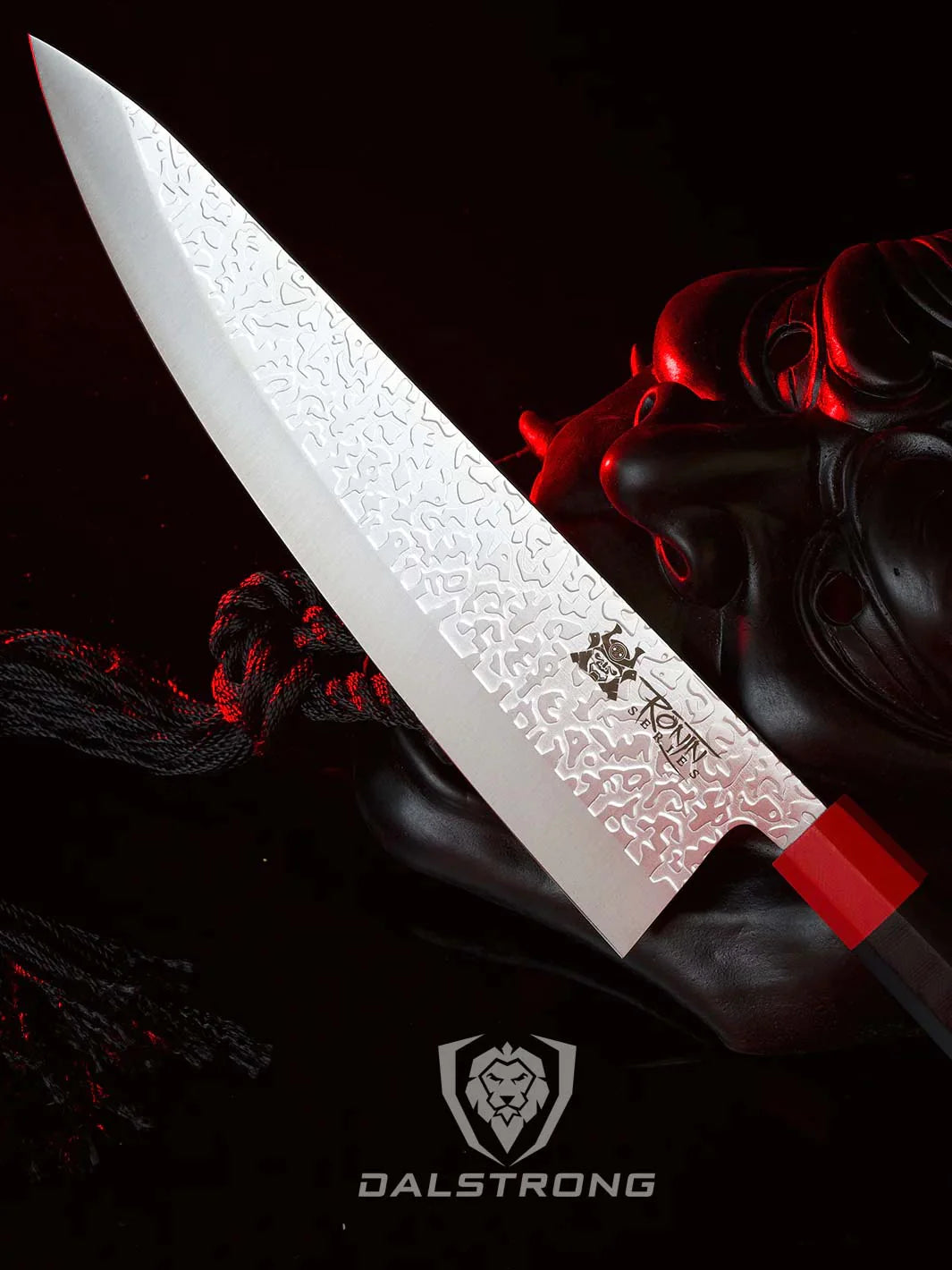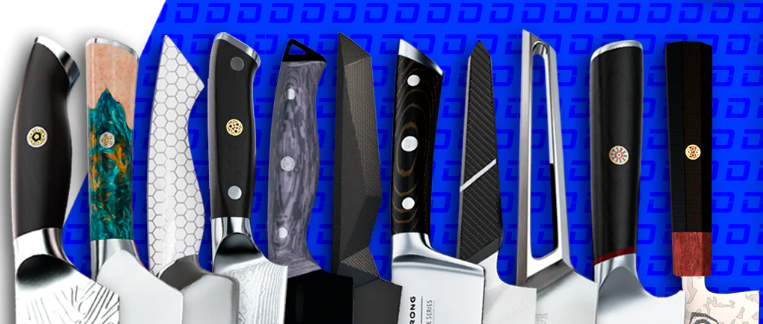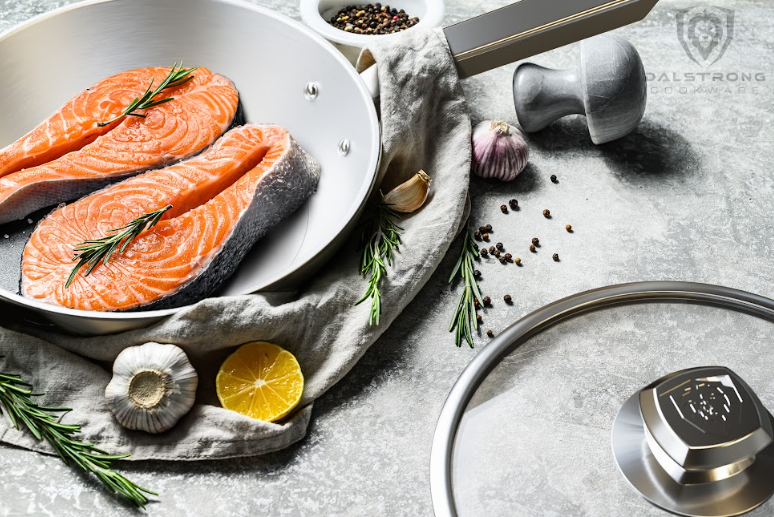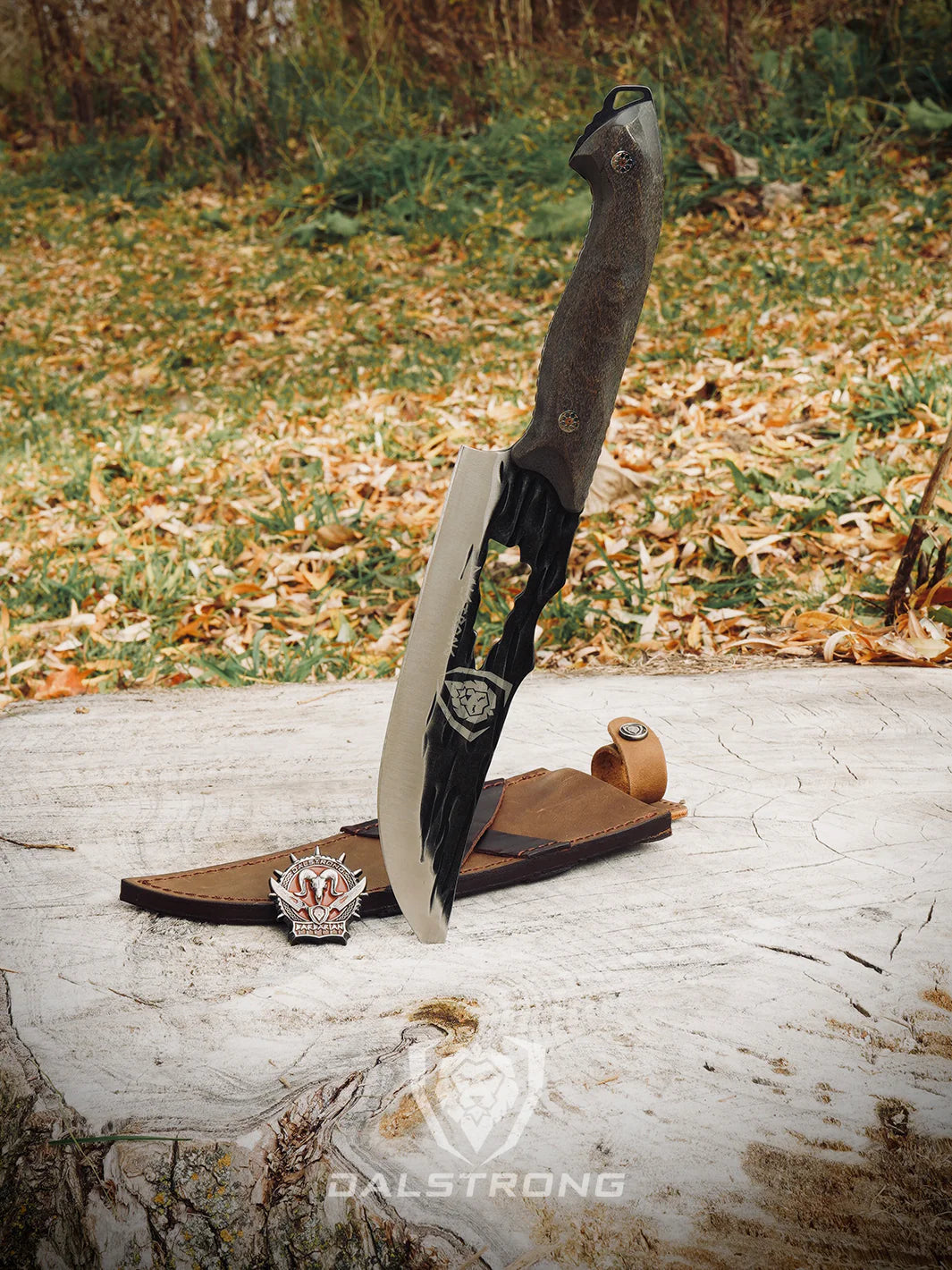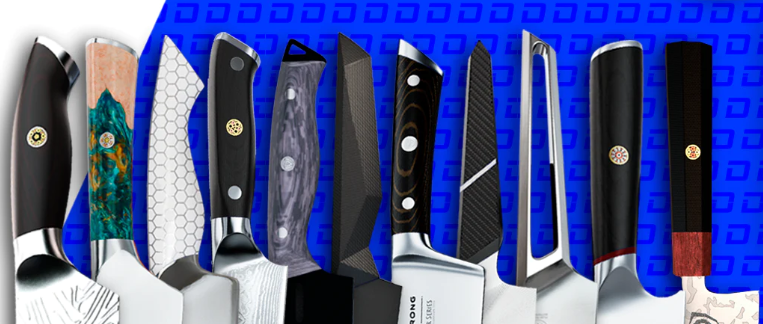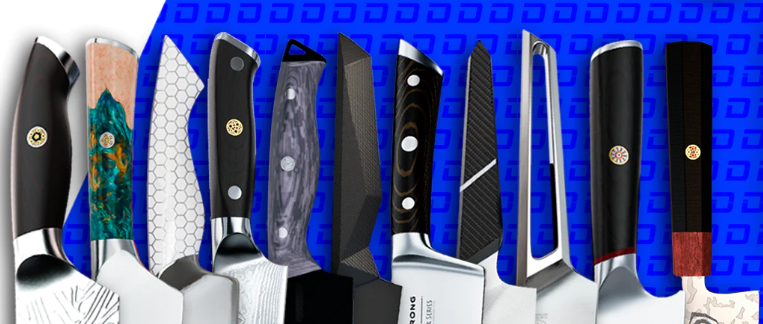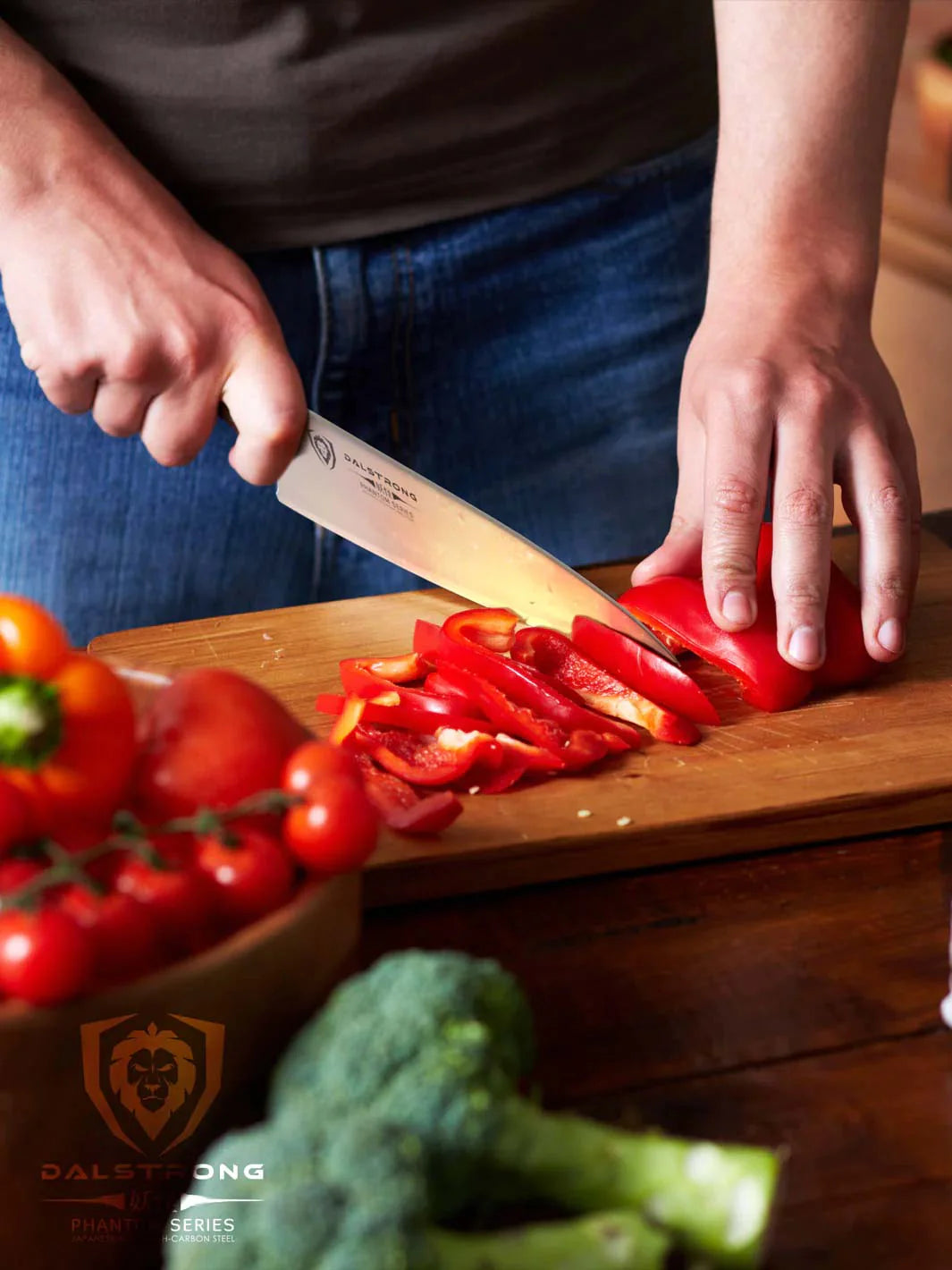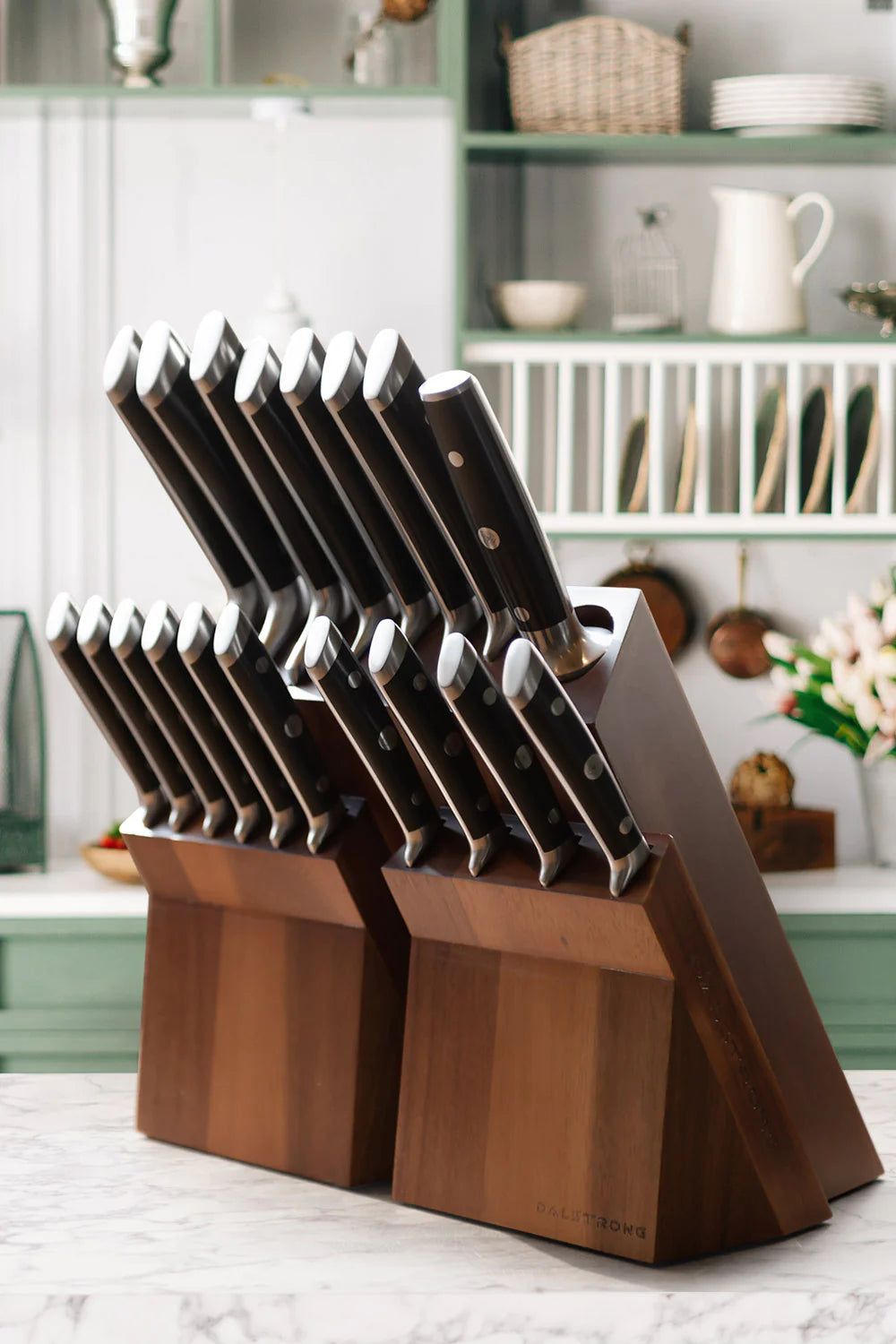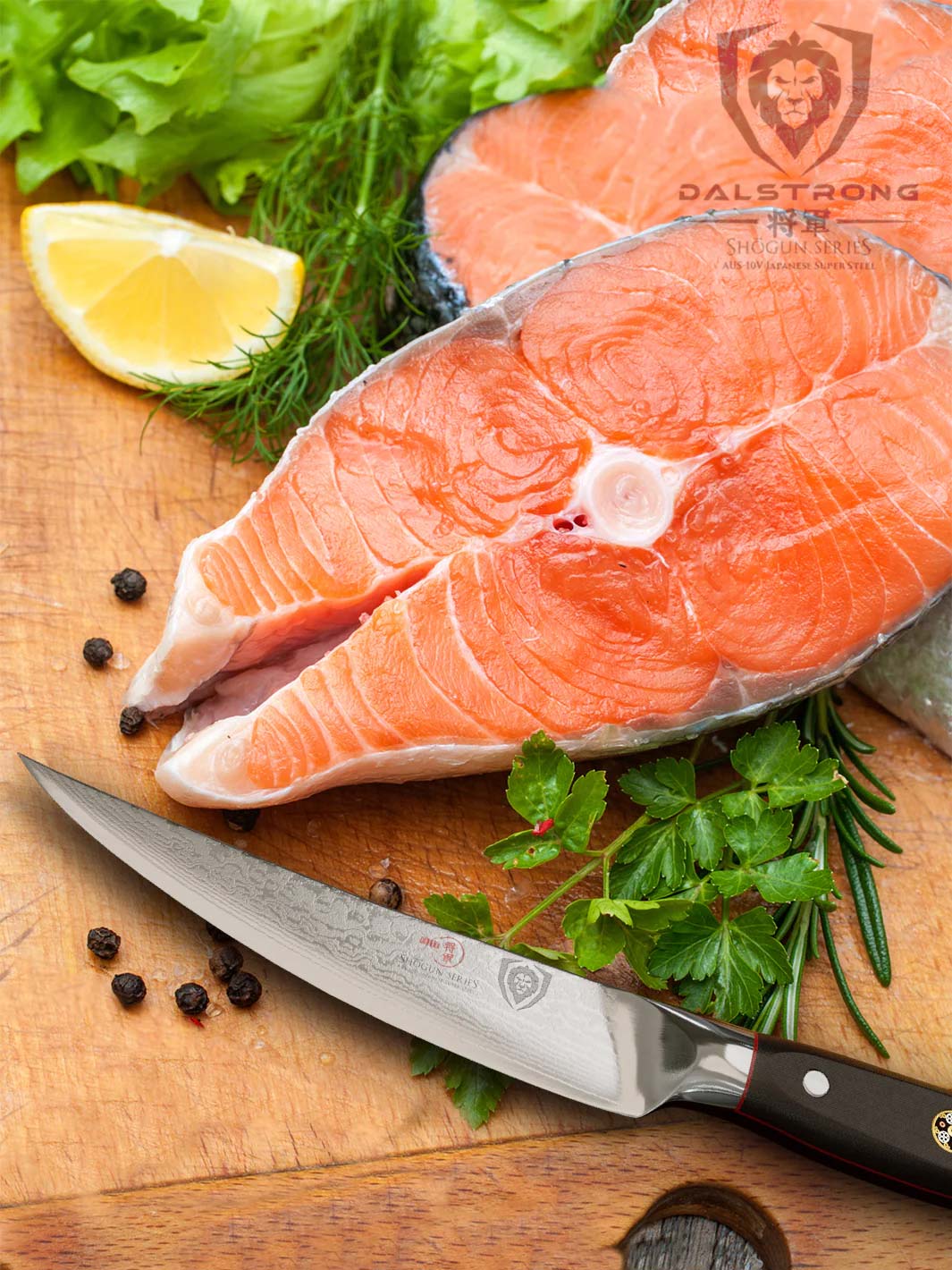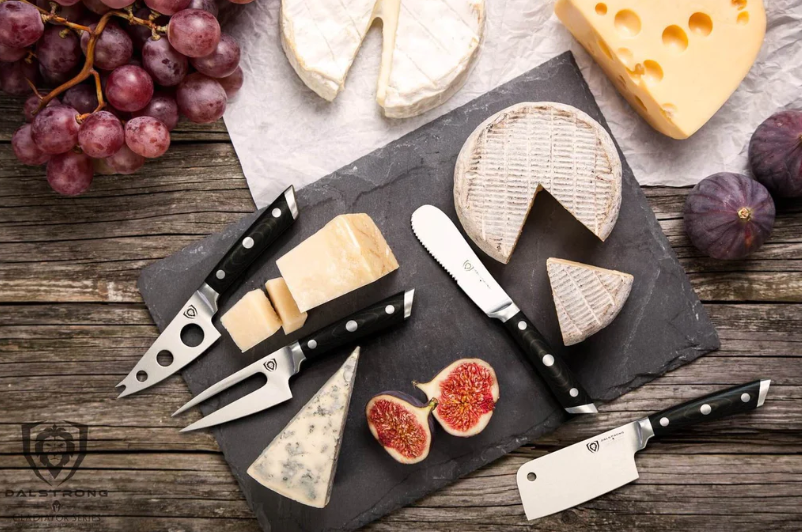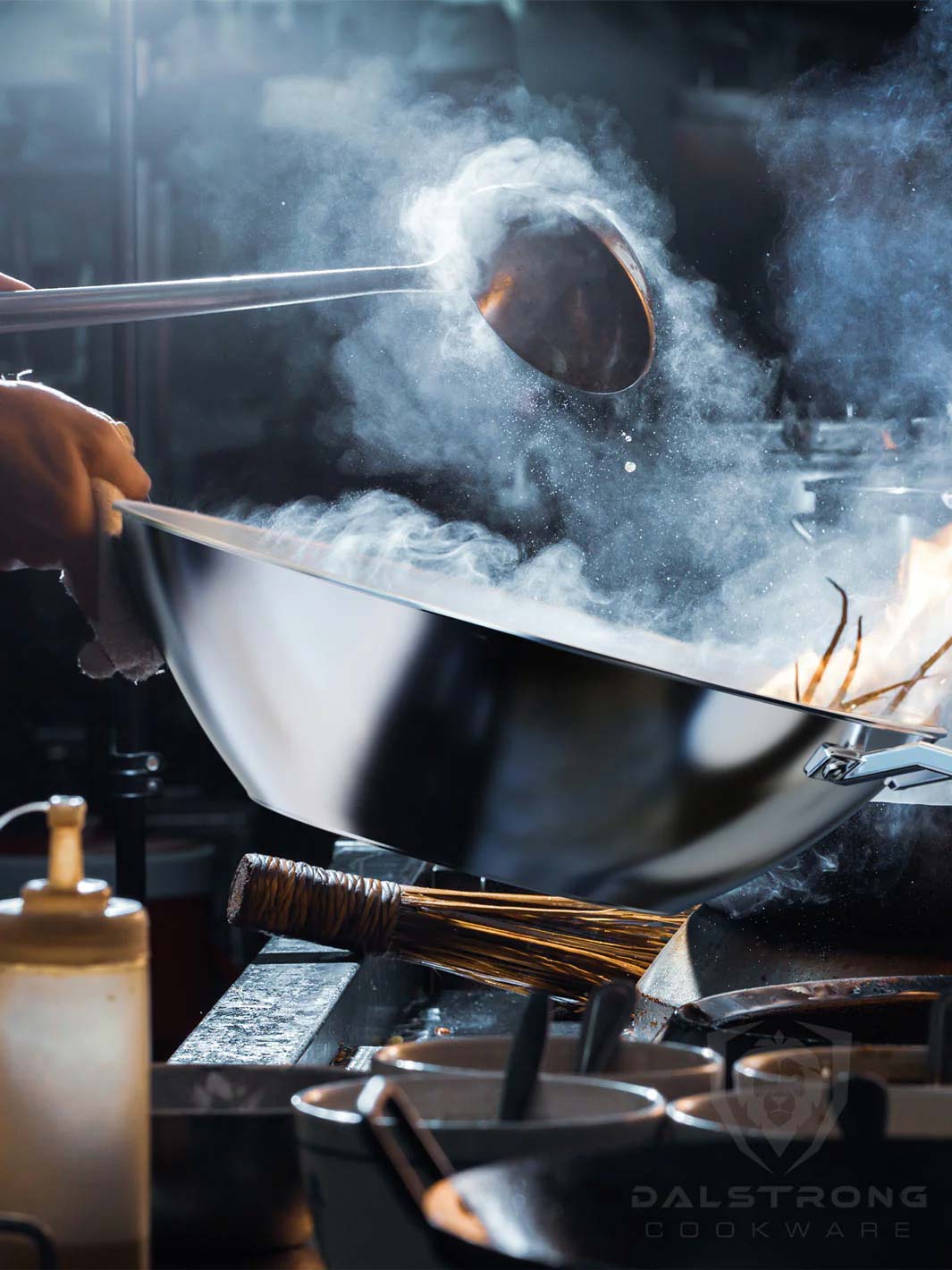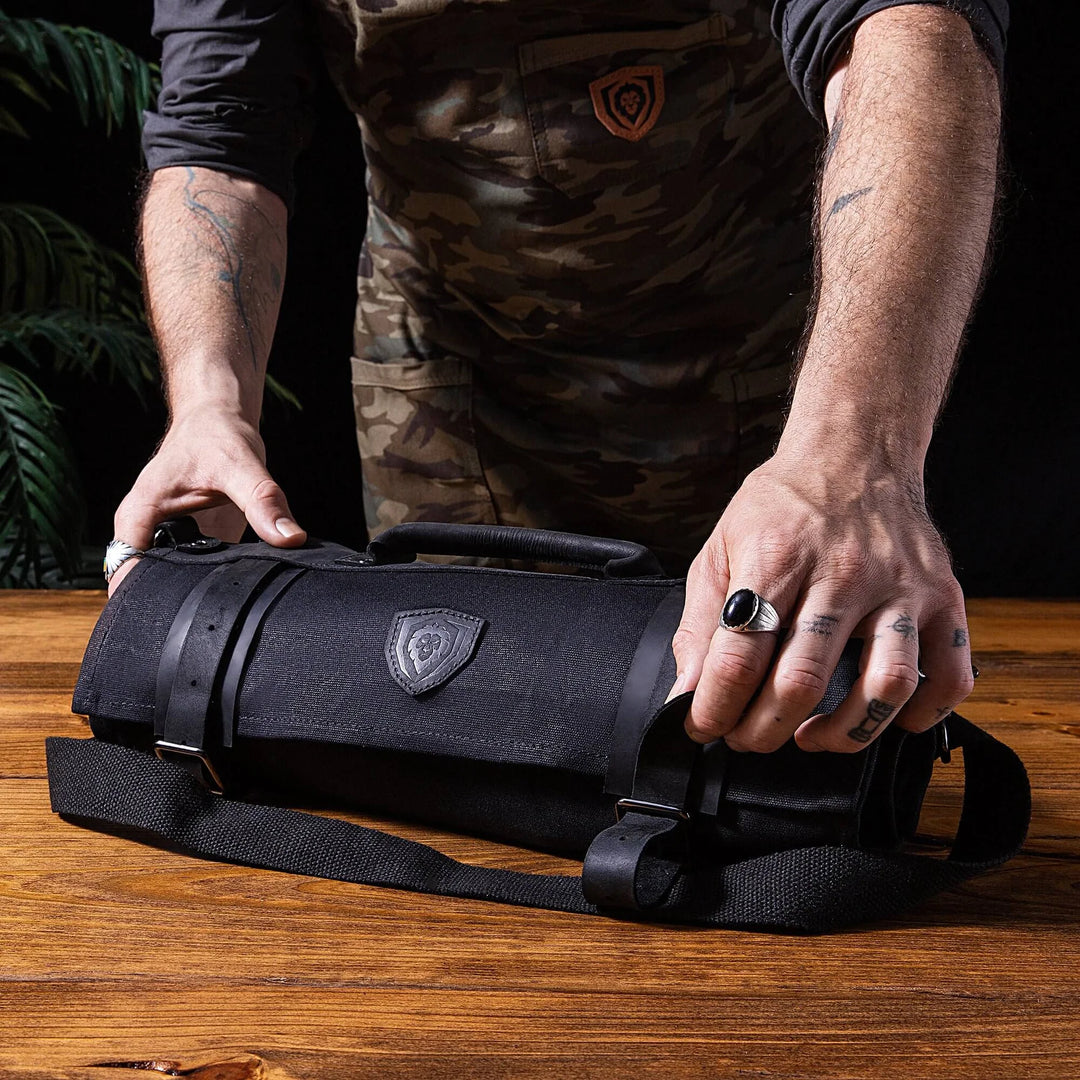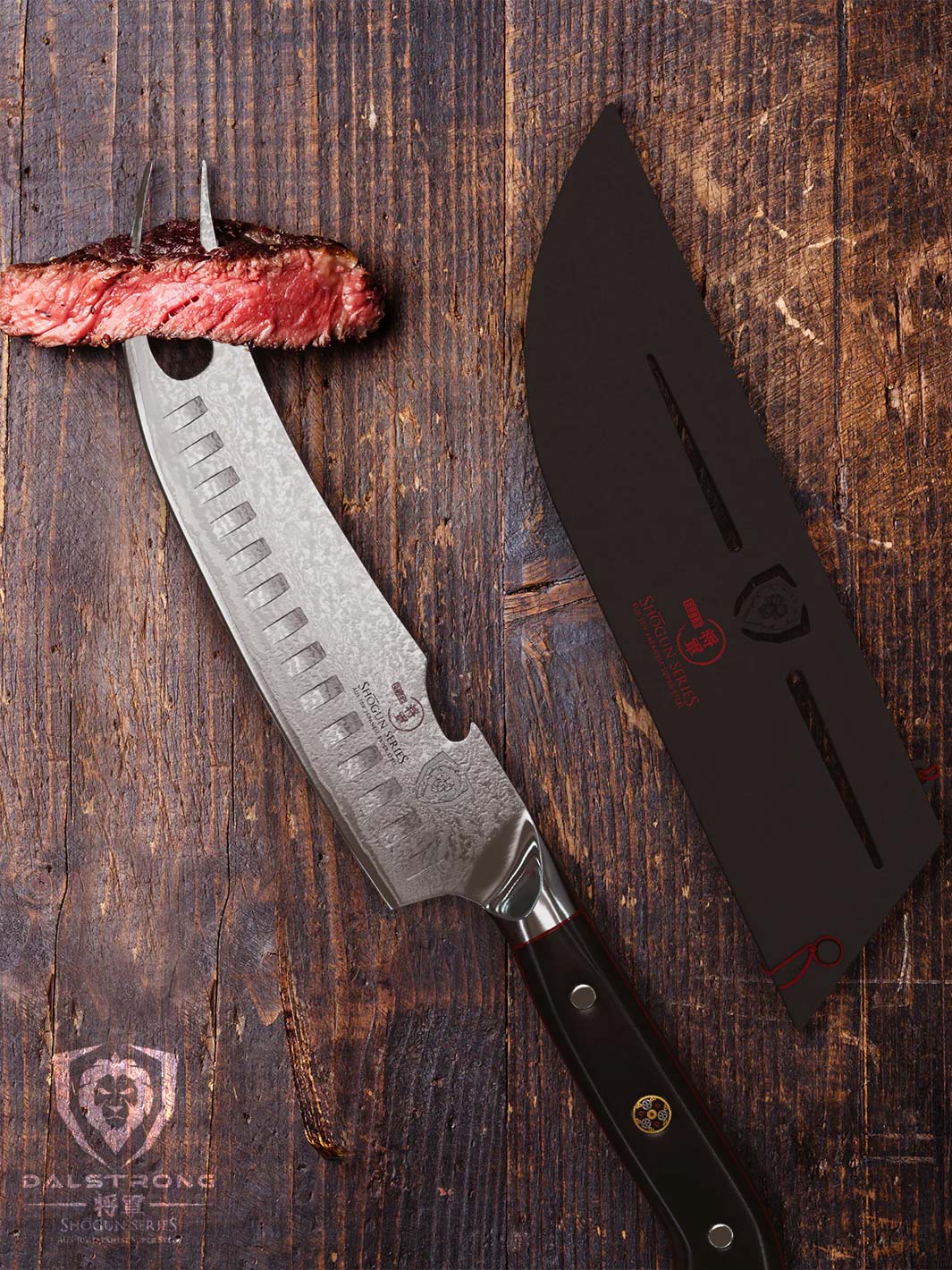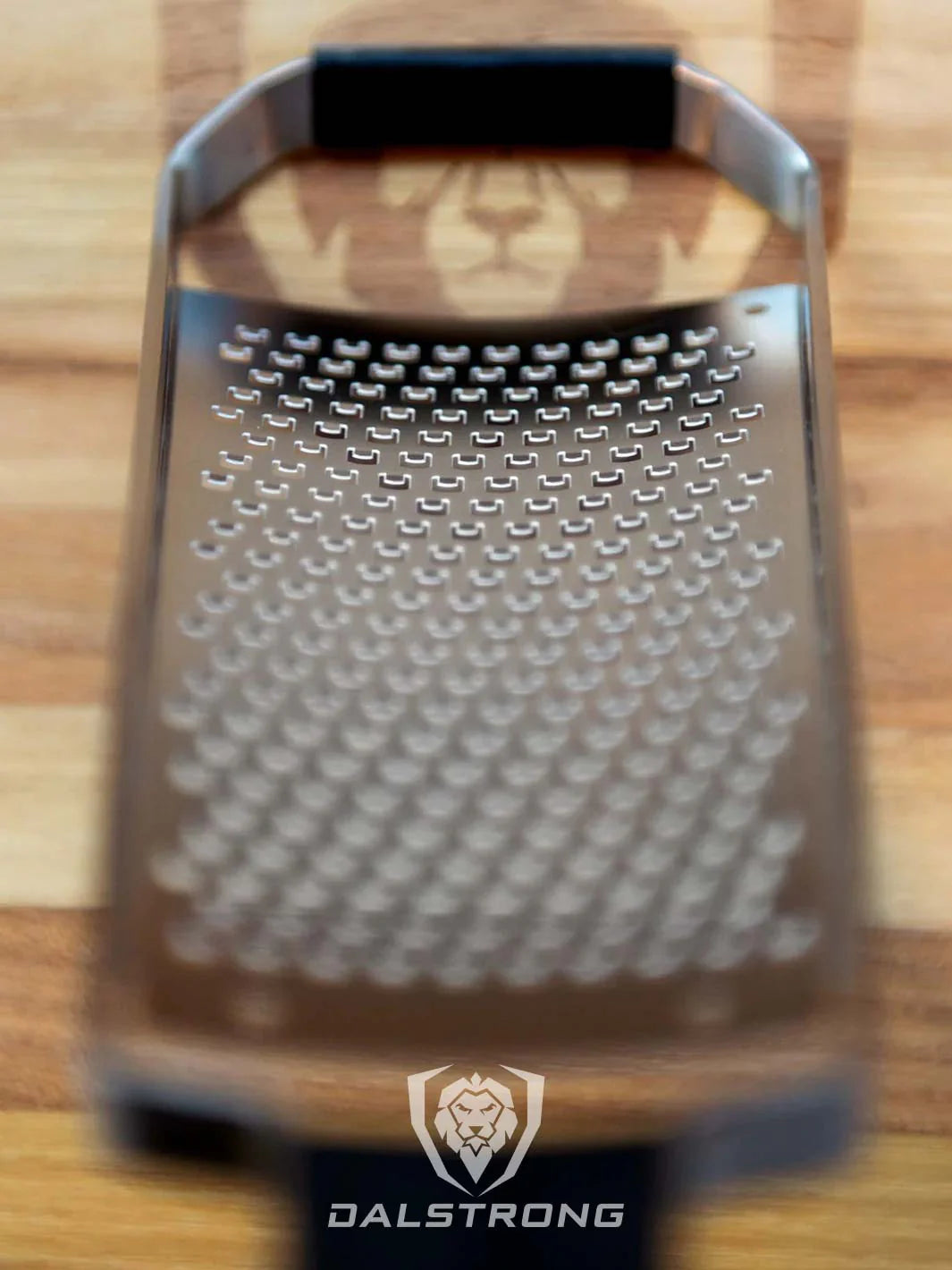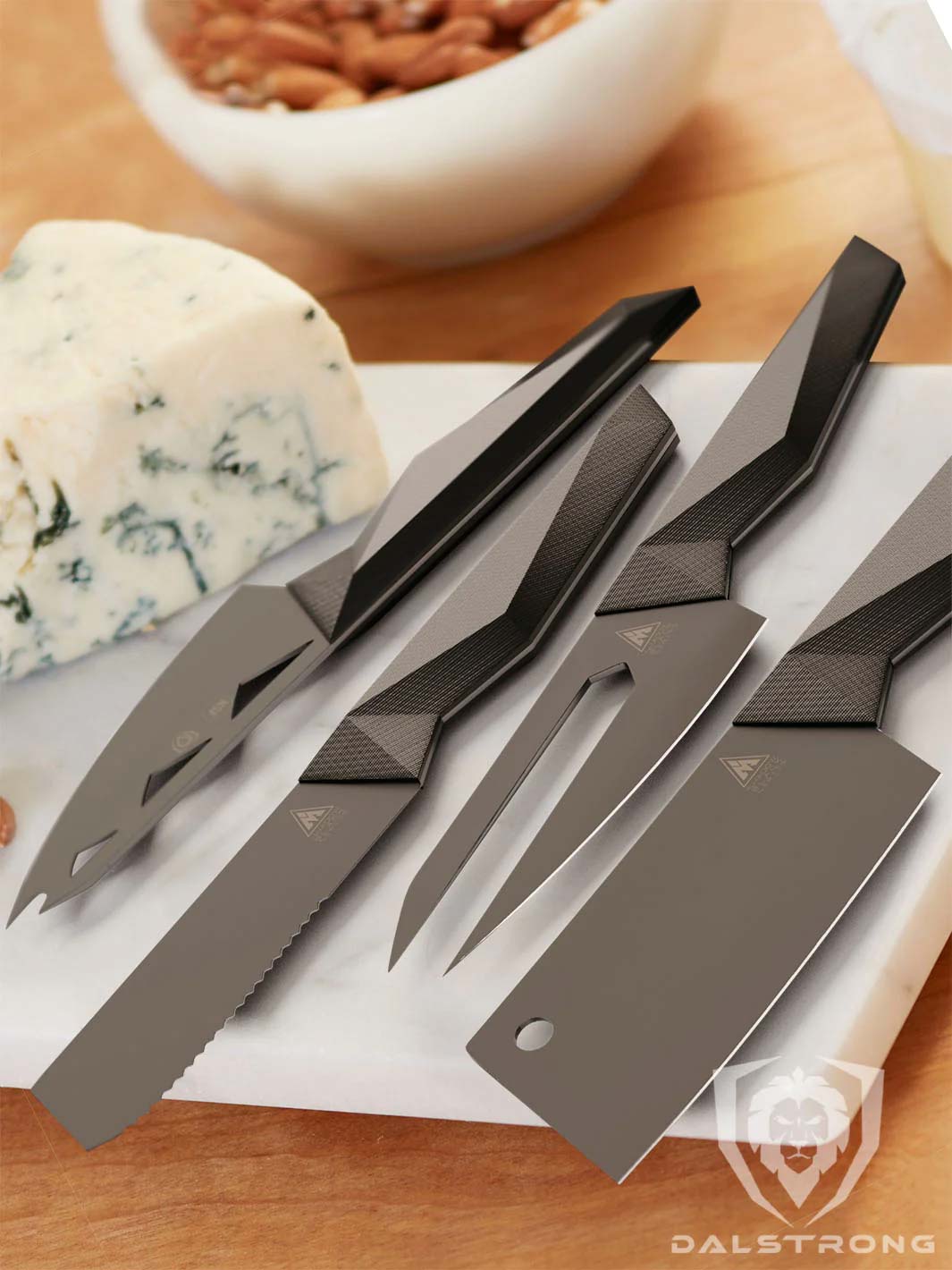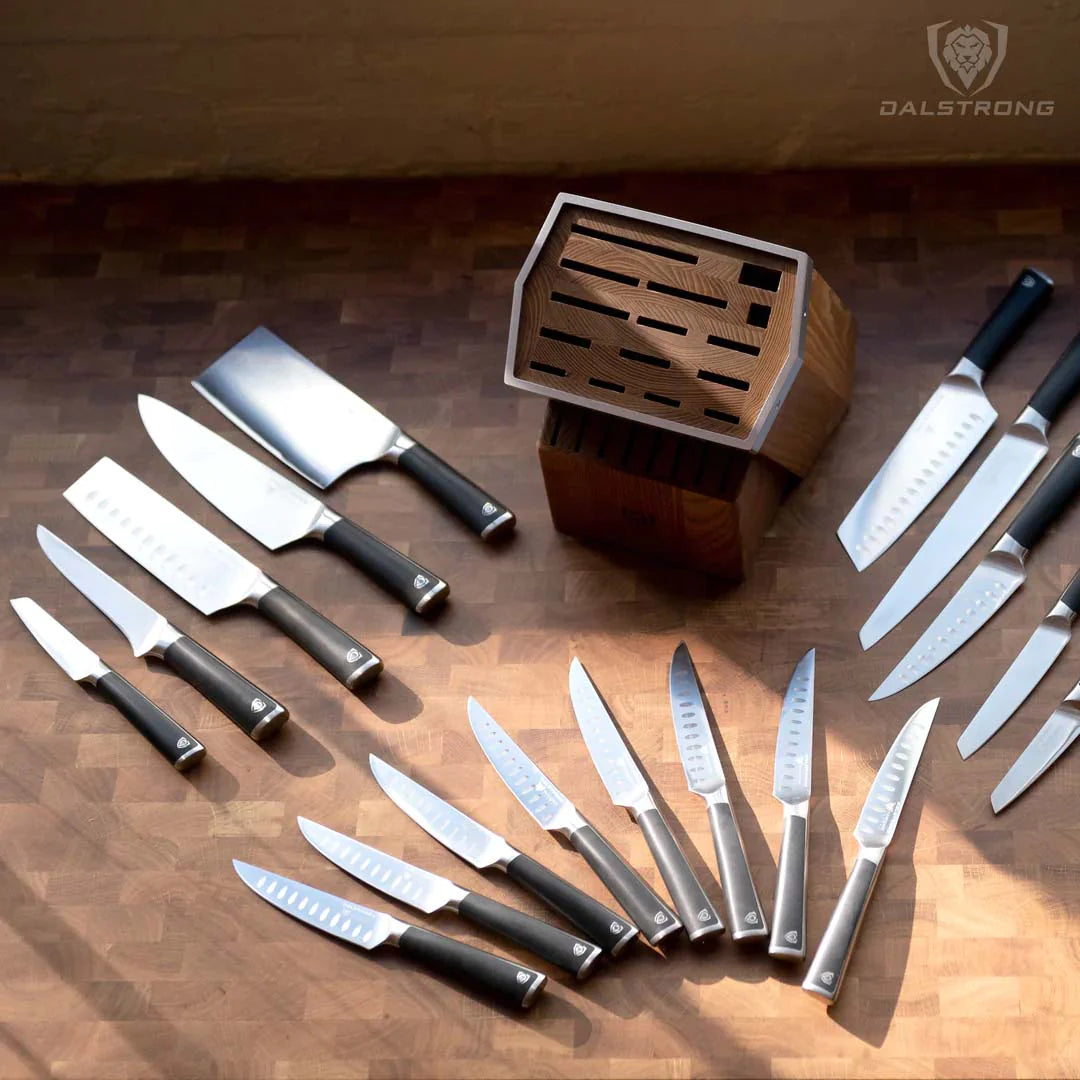How to Keep a Sharp Knife (And Why It's Important)
Wherever you are in your culinary journey, sharp kitchen tools are a vital part of your cooking experience. Knife skills aren't much use if your cooking tools aren't at their finest. The sharper your knife, the smoother your meal preparation. Ready to slice into the world of knife sharpening and maintenance? Let's get into it.
1. Importance Of Using A Sharp Knife In The Kitchen
 #3000 / #8000 Grit Premium Whetstone Set Dalstrong
#3000 / #8000 Grit Premium Whetstone Set Dalstrong
There are few things as satisfying as using a really sharp knife. The way it slices through even the toughest ingredients with ease, the way it leaves you with perfectly uniform and precise cuts.
The feeling of control, the effortless glide, the neat pile of beautifully chopped veggies or thinly sliced meats – it's the kind of thing that makes you feel like a true chef. An artisan. A master of your craft.
The pitfalls of a blunt knife
A blunt knife, on the other hand, represents… complications. Wasted effort. Less fun. Less precision. And, crucially, an accident waiting to happen. Imagine trying to dice onions, tomatoes, or other fruit and vegetable varieties with a dull knife. Instead of clean, neat cuts, you end up crushing the ingredients, leading to a loss of juice and flavor.
Not to mention, the more force you have to exert, the more likely you are to slip and potentially injure yourself. The duller the knife, the more difficult and more dangerous it becomes to achieve precise cuts.
The joy of using a sharp knife
A sharp knife, like a properly-sharpened 8-inch chef's knife, glides through ingredients effortlessly. Your cuts are not only neater and more precise, but you also preserve the texture and integrity of your ingredients, thereby enhancing their flavor.
Whether you're slicing a ripe tomato, julienning a bell pepper, or mincing fresh herbs, a sharp knife ensures that every cut gives your ingredient's natural beauty and taste the respect they deserve.
If you've invested in high-quality kitchen knives such as a meticulously crafted Japanese knife or robust German knives, maintaining their sharpness isn't just about ease of use and safety - it's also about preserving your investment.
These finely honed tools, often handmade by expert bladesmiths, are designed to offer exceptional performance and longevity. Their edge retention and overall performance can only be upheld through regular honing and sharpening.
What it comes down to is this: using a sharp knife transforms your culinary process from a chore to a joy. It elevates your dishes, keeps you safer, and helps your prized knives last longer. As any experienced chef would tell you, a sharp knife isn't just a tool, it's an extension of your hand. It's what turns ingredients into cuisine and home cooks into culinary maestros.
Read about how to choose the best kitchen knife, here.
2. How Sharp Should My Knife Be?
 Dalstrong #1000 / #6000 Grit with Nagura Stone & Rust Eraser Premium Whetstone Kit
Dalstrong #1000 / #6000 Grit with Nagura Stone & Rust Eraser Premium Whetstone Kit
There are many things in life that come down to personal preference. The doneness of your steak. Whether you like coffee or tea. Pizza toppings. Music genres. But the sharpness of your knives? That's usually not one of them.
If you ask any culinary enthusiast or professional chef how sharp their knife should be, the answer might be something along the lines of "as sharp as possible!" Having said that, it's important to establish that the answer isn't always that straightforward. It depends on several factors, including the type of knife and its intended use.
How sharp are we talking?
At a bare minimum, a properly sharp knife should effortlessly glide through a piece of paper or a ripe tomato without any tearing or crushing. This level of sharpness ensures a smooth, clean cut, crucial for both the appearance and the taste of your dishes.
Your knife should also be versatile. It needs to be capable of handling delicate tasks, such as filleting a fish or making thin slices of fish for sushi, as well as heavier duty tasks, like breaking down a chicken or dicing a tough root vegetable. In essence, the edge retention – that is, the ability of your kitchen knife to maintain its sharpness through extensive use – is key to its performance.
Are there any scenarios where a less sharp knife is preferred?
Like we said: it's not that straightforward. Different tasks do require knives with different levels of sharpness. Certain tasks such as opening clamshells or prying things apart, using a blunt knife or tool is often safer and more effective as a sharp knife can slip or chip. Think of an oyster shucking knife, for instance – sharpness is good, but they don't need to be the absolute sharpest.
On the other hand, for jobs that require a little more heft and durability, such as breaking down a squash or slicing through a hard crust, a slightly blunter knife might be preferred. The heel of the blade on these knives is robust and designed to withstand harder materials, meaning it doesn't need to be as pointedly sharp as a sushi knife.
Another scenario where a less blunt knife is preferred might be when teaching children or beginners how to use a knife. When first learning knife skills, there may be a benefit to starting with a less sharp knife to minimize the risk of serious cuts. But remember: this should be a temporary step, as learning how to handle a sharp knife properly is an extremely important skill to develop.
A sharp knife blade is a wonderful thing
Understanding your knives and their ideal level of sharpness isn't just about getting the best performance out of them. It's about transforming your culinary experiences, making them safer, more efficient, and ultimately, more enjoyable. A sharp knife blade is a wonderful thing, and it might be the key element that elevates all of your meals.
3. How to Keep A Knife Sharp
 #400 / #1000 Grit Premium Whetstone Set Dalstrong
#400 / #1000 Grit Premium Whetstone Set Dalstrong
Knife maintenance is its own art and skill. It’s a blend of regular care, good habits, and occasional fine-tuning that ensures your blades stay as sharp and effective as the day you bought them.
One of the most important things to consider is the surface you're using for your chopping and slicing. The cutting board can be a silent enemy of your knives if you’re not careful. Hard surfaces like glass or ceramic can do more harm than good to your knife's edge, causing it to dull quicker than softer materials.
You should instead look for cutting boards made of materials like wood, plastic, or carbon fiber (check out this article on what to look for in a cutting board). These materials provide a cushioning effect that minimizes damage to your knife's edge while still being sturdy enough for you to cut efficiently.
Honing vs. sharpening: do you need to do both?
It's easy to confuse honing with sharpening – for the longest time I thought they were the same thing – but these two knife maintenance processes serve different purposes. Honing, performed with a tool like a honing rod or honing steel, is all about realignment.
Over time, your blade's edge can become bent or misaligned through regular use. Honing straightens this edge without removing significant material from the blade, keeping it straight and ready to cut.
However, no matter how regularly you hone your knives, there will come a time when the practice just won't restore their cutting power. This is where knife sharpening comes in.
What is sharpening? Essentially, sharpening is the process of grinding away a small amount of material from the knife blade to create a new, sharp edge. Knife sharpening can be achieved using a variety of tools, but one of the most common is a sharpening stone.
What are sharpening stones?
Sharpening stones, also known as whetstones, come in various "grits" – the grit number of a stone denotes the size of the abrasive particles in the stone. A lower grit number means a coarser stone, ideal for very dull knives or those with chipped edges.
A higher grit number signifies a finer stone, used for polishing and refining the edge. Notably, sharpening stones can also be used on pocket knives and other knives that aren't kitchen appliances.
Keeping a knife sharp isn’t merely about ensuring great performance; it’s also a sign of respect for your kitchen tools. A well-maintained knife will serve you faithfully for many years, and cooking will be a much better experience for all involved.
So take these knife maintenance practices to heart and your knives will thank you for it. Well, not really; they can't talk. But if they could, they would.
4. Recommended Dalstrong Whetstones
Whetstones might be a little intimidating at first – I know they were for me. But they're a lot easier to use than you might think, and it's a step you won't regret. Investing in good quality whetstones is a smart move for any serious cook.
1. #1000 / #6000 Grit Combo with Oak Storage Box Portable Whetstone Kit
This mobile whetstone kit is designed for the meticulous care of your cutting tools. It offers a chic, user-friendly solution that not only ensures your knives are kept razor-edged but also sports an aesthetically pleasing appearance. And what's more, the knives we tested on this whetstone came out with a razor sharp blade.
PROS:
- Dual-faceted sharpening stone crafted from superior-grade Corundum.
- Housed in an attractive, sturdy oak case.
- Features #1000 grit for sharpening, and #6000 grit for achieving a polished finish.
- Pretty straightforward to operate for knife owners of varying skills.
CONS:
- The case dimensions are on the larger side, slightly reducing its portability.
- Requires some level of skill or knowledge to achieve the best results (but don't worry – we're here to teach you how to sharpen your knife with a whetstone).
2. #1000 / #6000 Grit with Nagura Stone & Rust Eraser Premium Whetstone Kit
This comprehensive kit is an incredible value, housing the #1000 grit stone for precision edge sharpening, the #6000 grit stone for achieving an ultra-fine polish, and a supplementary Nagura stone for added functionality. Built with quality and performance in mind, the set is designed to cater to all your knife maintenance needs. It acts as a great solution for restoring your blades to their original luster and razor-sharp precision..
PROS:
- It features the Nagura leveling stone, which acts as a conditioner for both the sharpening and polishing stones.
- Constructed from the finest-grade corundum (aluminum oxide).
- Effectively rids your knives of any corrosion or scuff marks that can build up on high-carbon and stainless steel knives.
- Comes housed in a beautifully handcrafted acacia wood base, each boasting a distinct and stunning grain pattern.
CONS:
- If you're not interested in the Nagura stone for rust removal, maybe consider the previous product on this list.
- The oversized nature of the stones means you'll need a little more space for storage.
3. #3000 / #8000 Grit Premium Whetstone Set
This kit is an advanced choice for sharpening your blades with a whetstone set. It's ideally tailored for refurbishing and perfecting both German and Japanese knives, scissors, and more. The kit is an incredible value at its price point, with the regular price of similar products often being much higher.
PROS:
- Suits a variety of blades, including German and Japanese style kitchen knives.
- The #3000 grit stone is a versatile tool for rejuvenating dull or worn-out blades.
- The #8000 grit stone restores the mirror finish and razor-sharp edge of your blade.
- Increased surface area of the stones enhances the efficiency of sharpening.
CONS:
- For those seeking an even smoother finish, other alternatives with finer grits might be more suitable.
- Optional acacia wood base for stone stability is sold separately, which could add to overall cost.
4. #400 / #1000 Grit Premium Whetstone Set
This awesome knife honing kit is a go-to choice for both seasoned blade sharpeners and novices just stepping into the world of knife care and maintenance. This deluxe set's advantage lies in the #400 grit stone, which can transform even severely dull or damaged blades, making it an excellent choice for extensive knife rehabilitation. The combination of coarse and all-purpose stones provides a comprehensive sharpening system to cater to a broad range of knife conditions and maintenance needs.
PROS:
- Exceptional craftsmanship and a fantastic looking design.
- Equipped with a #400 coarse grit stone to revive the bluntest of blades.
- A #1000 grit general sharpening stone is included to restore a great polish and razor-sharp edge to your blade.
- An ideal present for the blade aficionado in your life.
CONS:
- The ample width of the stones, although offering a larger workspace, might require an adjustment period for those accustomed to narrower stones.
- Unlike the higher grit stones, the #400 grit might be too coarse for blades that only need light sharpening or touch-ups.
5. Sharp Knife Safety Tips
 #400 / #1000 Grit Premium Whetstone Set Dalstrong
#400 / #1000 Grit Premium Whetstone Set Dalstrong
Remember this mantra: "A sharp knife is a safe knife." This is true, but there are a few steps you can take to prevent nasty accidents.
Yes, a sharp knife does require less force, reducing the chance of slips, and it provides better control over your cuts. However, the point (get it?) of a sharp knife isn't to provide a false sense of security but to encourage mindfulness and respect for the instrument you're using.
Here are some safety tips that can help you use your sharp knives more confidently and safely:
Cut away from your body
This may seem like common sense, but it's easy to forget in the heat of cooking. Always slice, dice, or chop away from your body to avoid any accidental injury.
Use pot holders for stability
If you're cutting something that's a little unstable – a round vegetable, for instance – try using a pot holder or a kitchen towel to stabilize it. This not only protects your hands but makes it more comfortable to hold and also gives you better control over what you're cutting.
Exercise proper knife storage
How you store your knives is just as important as how you use them. A leather knife roll, knife bags, and knife sheaths are not just for professional chefs. They protect your knives (and their sharp edges) from damage and help prevent accidental injury when reaching into a drawer. If you have kids in the house, secure storage also keeps sharp knives out of their reach.
Use the right knife for the right job
A bread knife is for bread, a boning knife is for boning, and so on. Using the correct knife for the job not only improves your efficiency but also reduces the risk of injury.
Keep your knives clean
Food residue can make a knife slippery. Clean your knives promptly after use (never leaving them to soak in a sink full of dishes) and dry them thoroughly to prevent slipping in your hand.
Don't reach to catch a falling knife
No, that's not the title of the next My Chemical Romance album. It's just good advice: if you drop a knife, let it fall. It might damage your floor or the knife, but that's better than risking an injury trying to catch it.
Learn proper knife techniques
Take the time to learn proper knife skills. Holding and using your knife correctly not only makes your prep work more efficient but also safer.
Don’t leave knives on the edge of countertops
Always ensure your knives are well inside the counter workspace to prevent them from being accidentally knocked off.
By following these sharp knife safety tips, you can enjoy the advantages of a sharp knife while minimizing the risks
6. Frequently Asked Questions
Can I use a honing rod on a Japanese knife?
Honing rods can be used on Japanese knives without any problem Japanese chefs use them all the time. Just keep in mind that Japanese knives will feature a thinner steel blade. Thinner blades will require a more delicate touch.
How often should I sharpen my knives?
How often you sharpen your knives depends on how often you use your knives and what you cut. Most home cooks find they need to sharpen their knives every few months. Serrated knives can also be sharpened, but these sharpening sessions are usually much more spaced out.
What's the difference between German steel and Japanese steel?
Generally, German steel is more durable and requires less maintenance. Japanese steel is often harder (with a higher Rockwell hardness score), allowing for a sharper, but more brittle edge. Both types of steel make great chefs knives according to all the pro chefs we know.
How do you use a sharp knife safely?
Safe knife use begins with proper handling. Hold the knife firmly by the handle, never by the blade. Always cut away from your body to avoid accidental injury. After use, clean your knife promptly and store it safely in a knife roll or knife block, away from reach of children. Regularly maintain your knife's sharpness, but be sure to handle it with care during the sharpening process.





































































































































































































